Lord Gampopa’s Instructions -
A Precious Garland of the Supreme Path
For years, our dearest Guru, Jetsun Choekyi Gonpo has advised us to read, comprehend and take to heart the precious teachings of Lord Gampopa – A Precious Garland of the Supreme Path. There are many translated versions available. However, without Rinpoche’s blessing and explanation, we find it a little hard to fully understand its true and deeper meaning. Under repetitive entreaty, Rinpoche has compassionately agreed to bestow us weekly this essential instruction for all Dharma practitioners.
This teaching is important and relevant for practitioners of all stages. The instructions encompassed the precise guidance on the complete path – The View, Meditation, and Conduct – what every practitioner should know and remember by heart in order to stay on the right path.
Rinpoche deeply hopes that we could spend time to contemplate thoroughly on each chapter, internalize its profound meaning, and merge it with our conduct. Only through this, our practice will bear fruits, enabling us to truly benefit self and other.
Happy contemplating. May all be Auspicious!
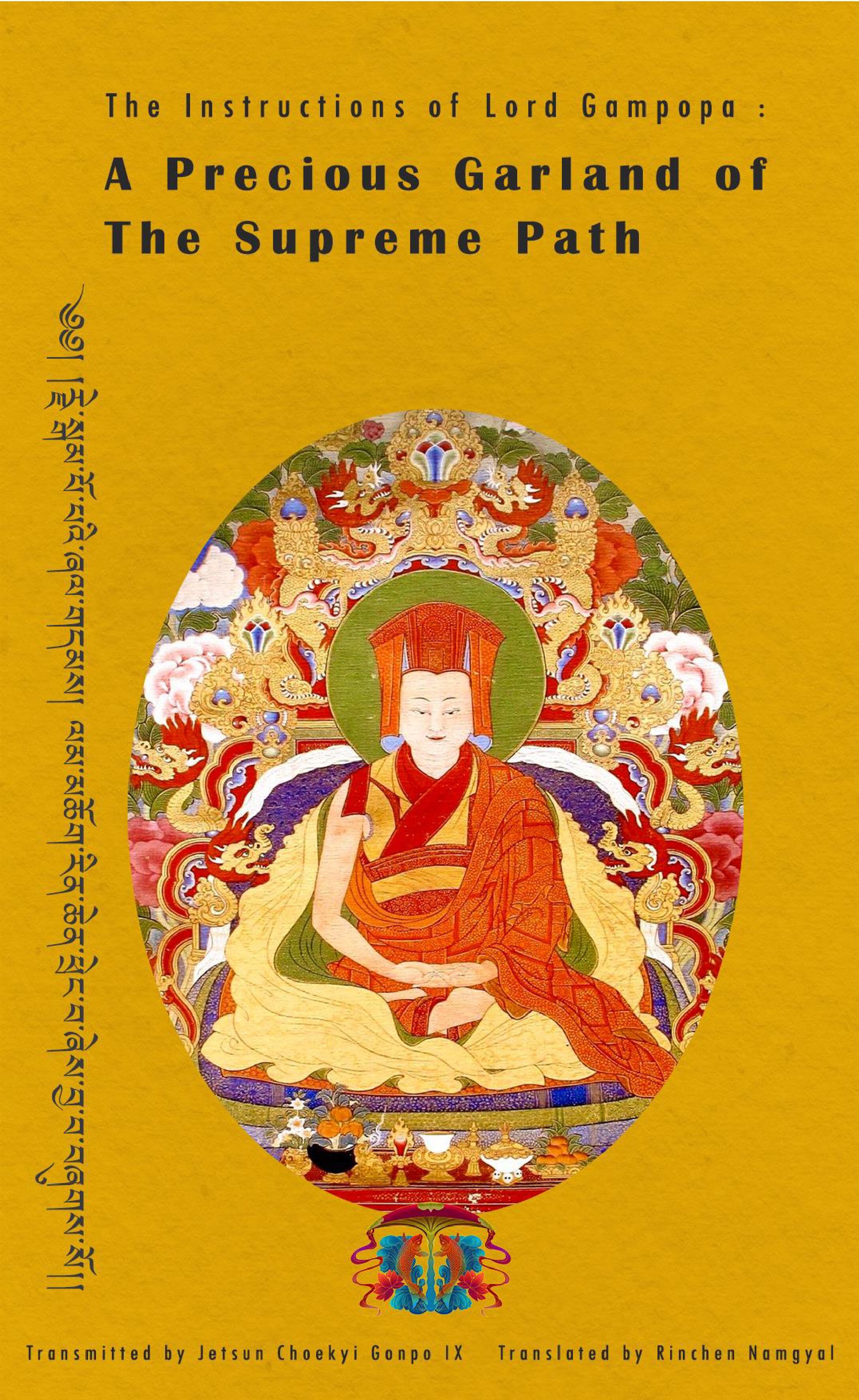
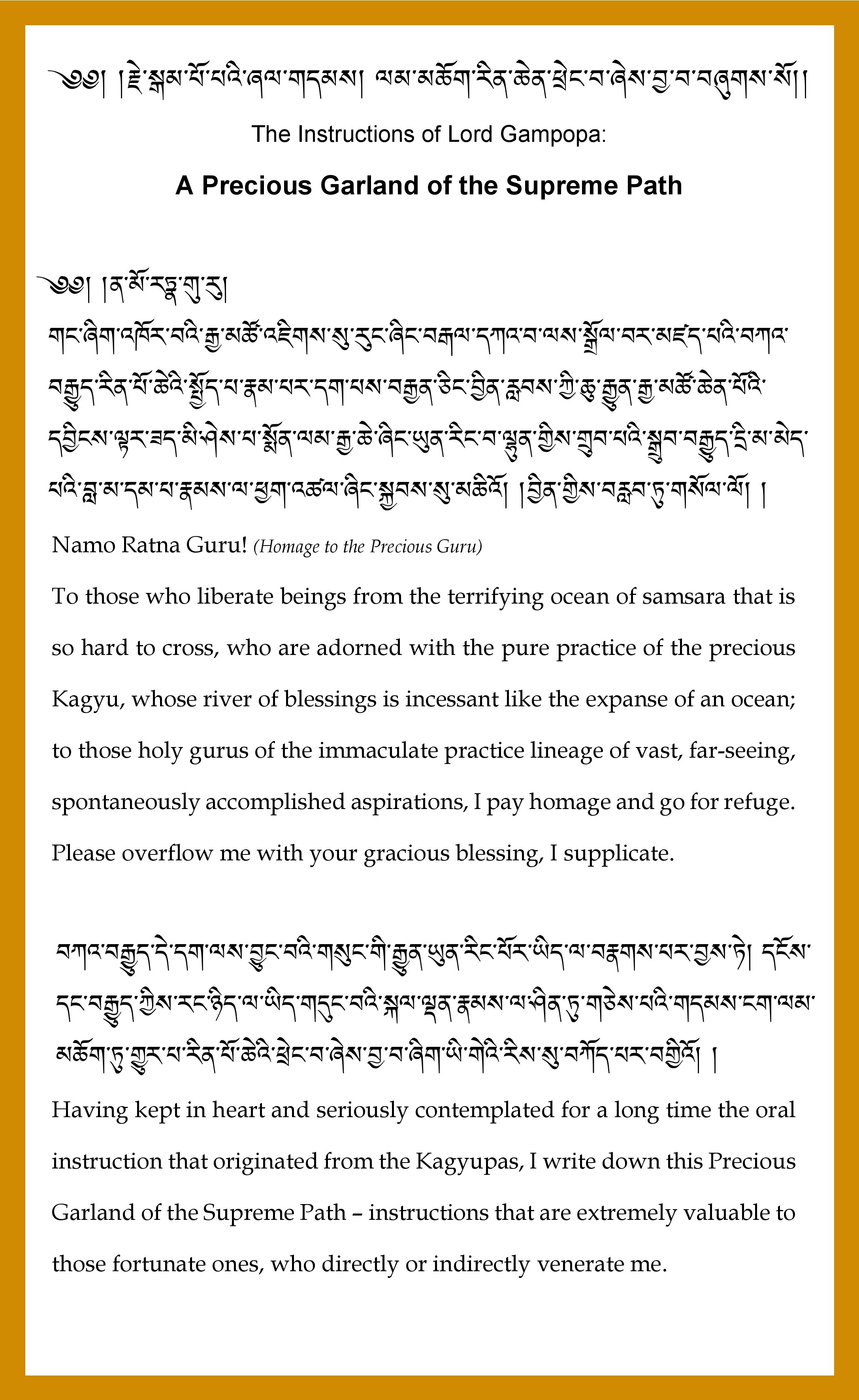

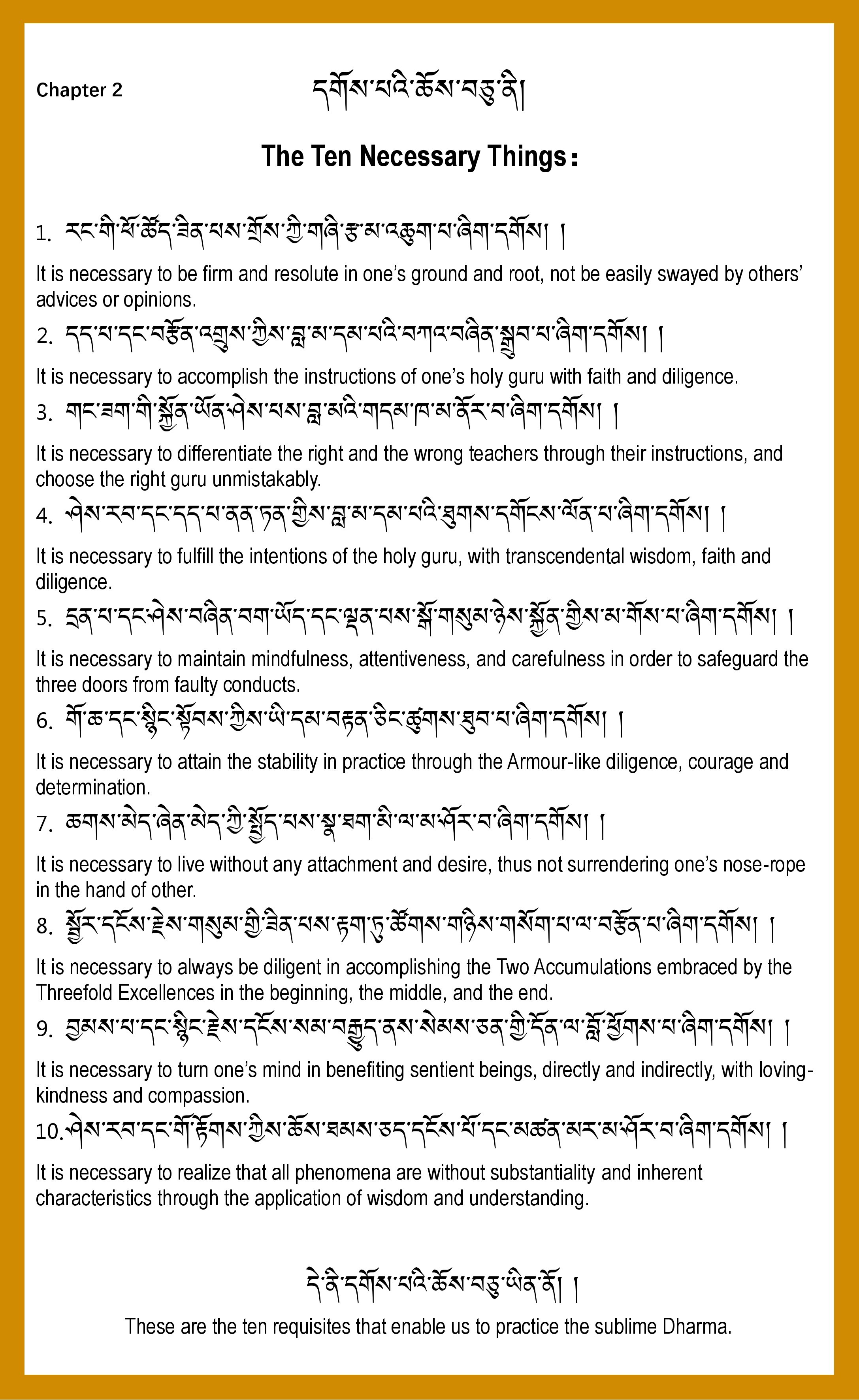
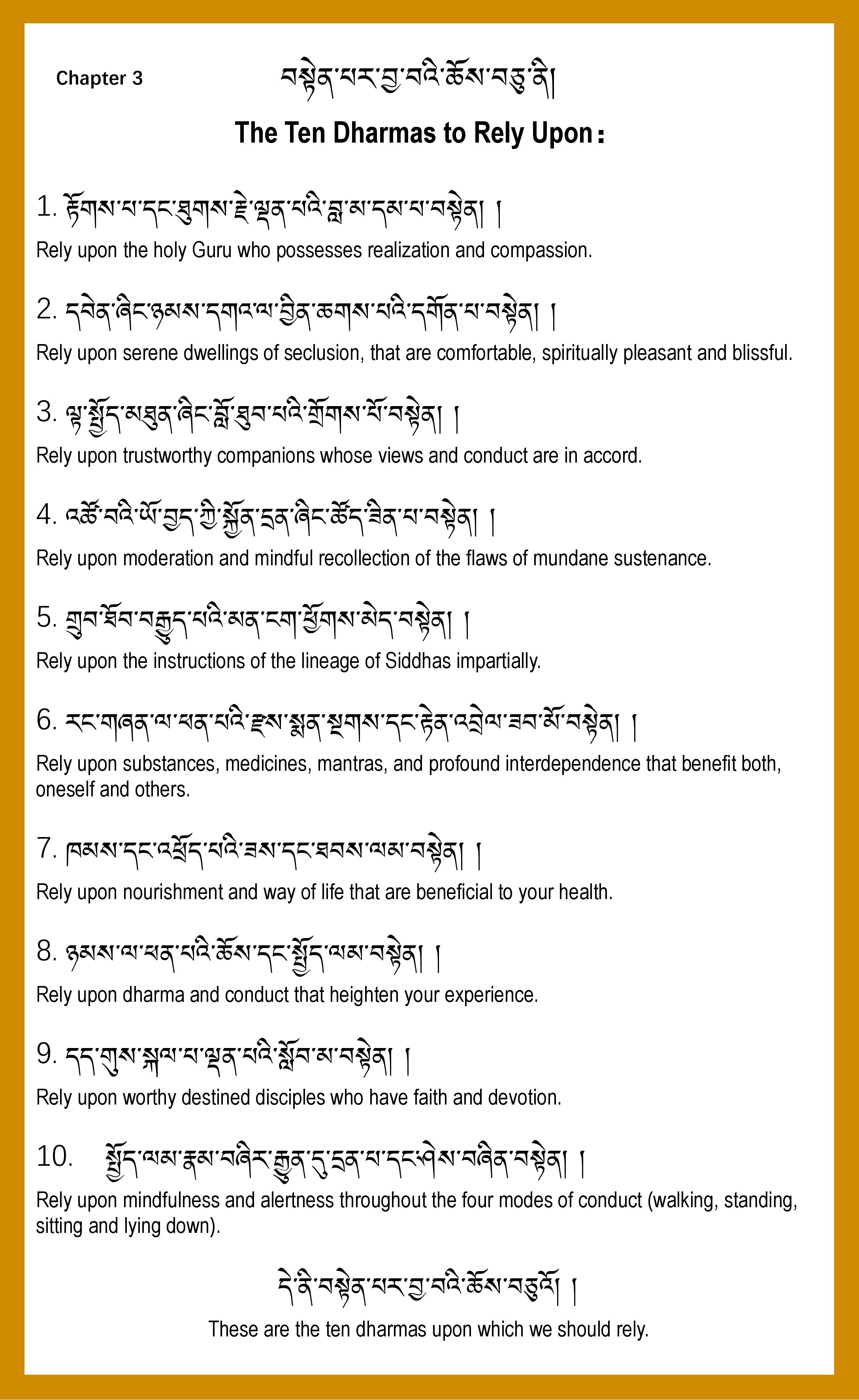
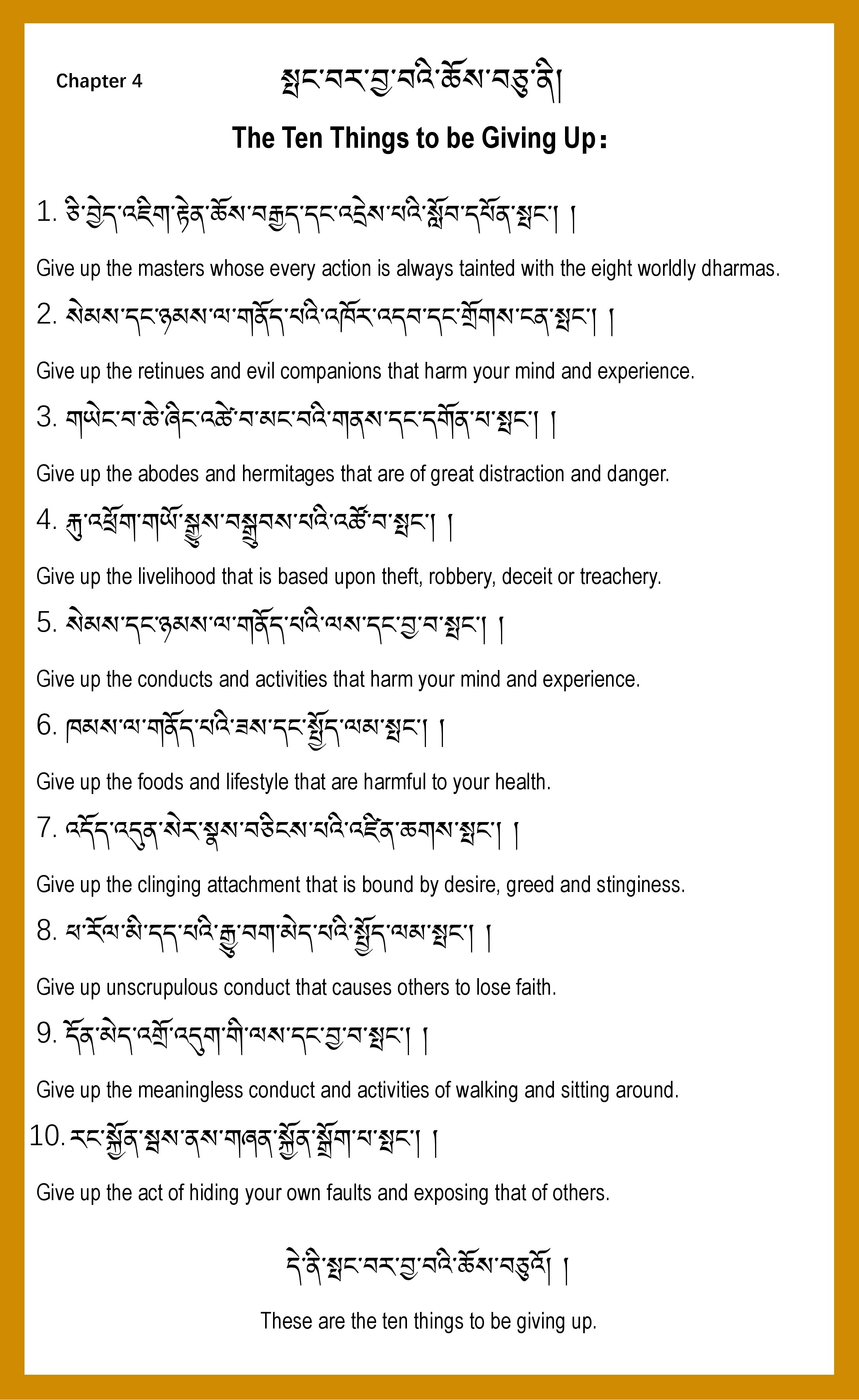
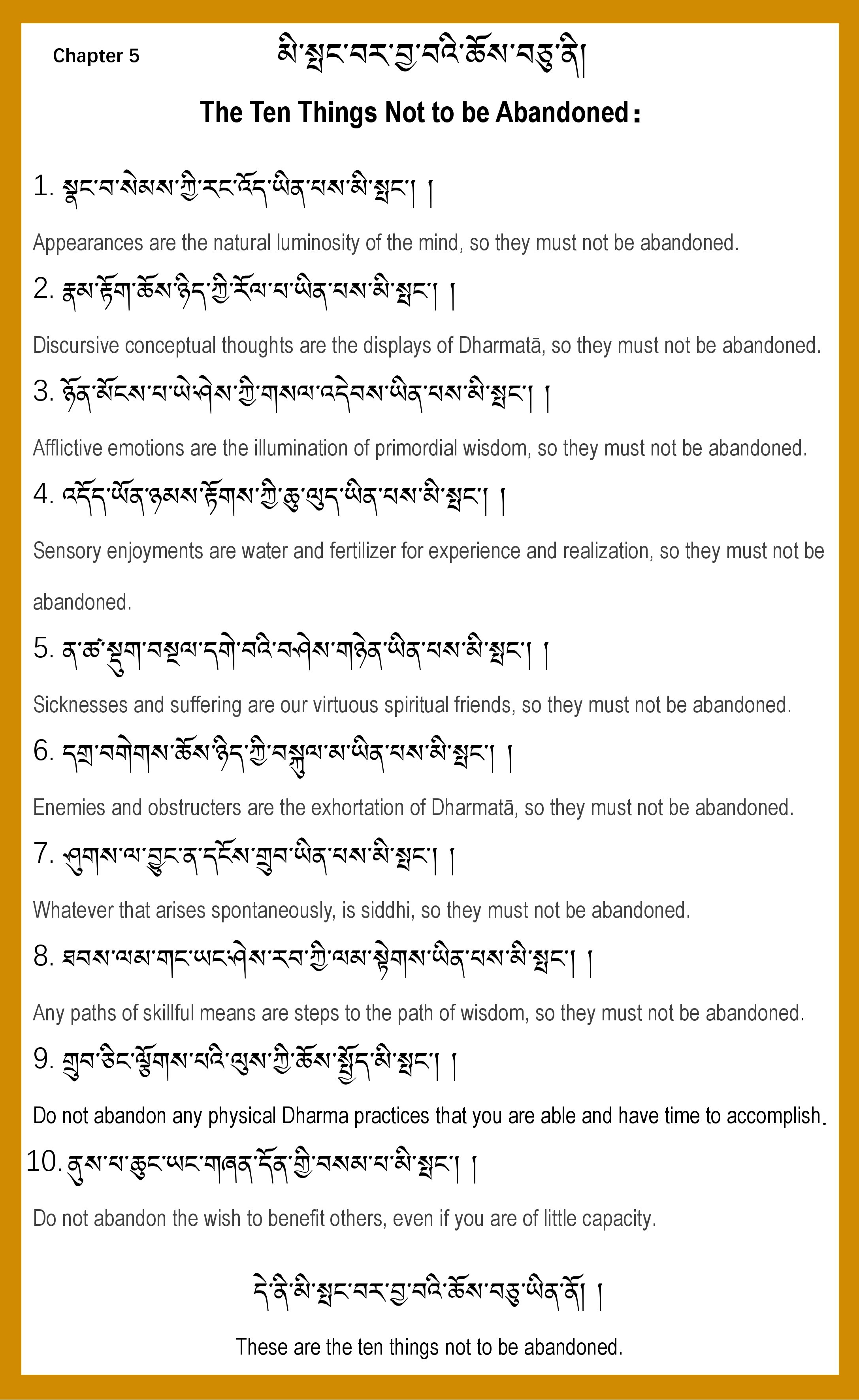
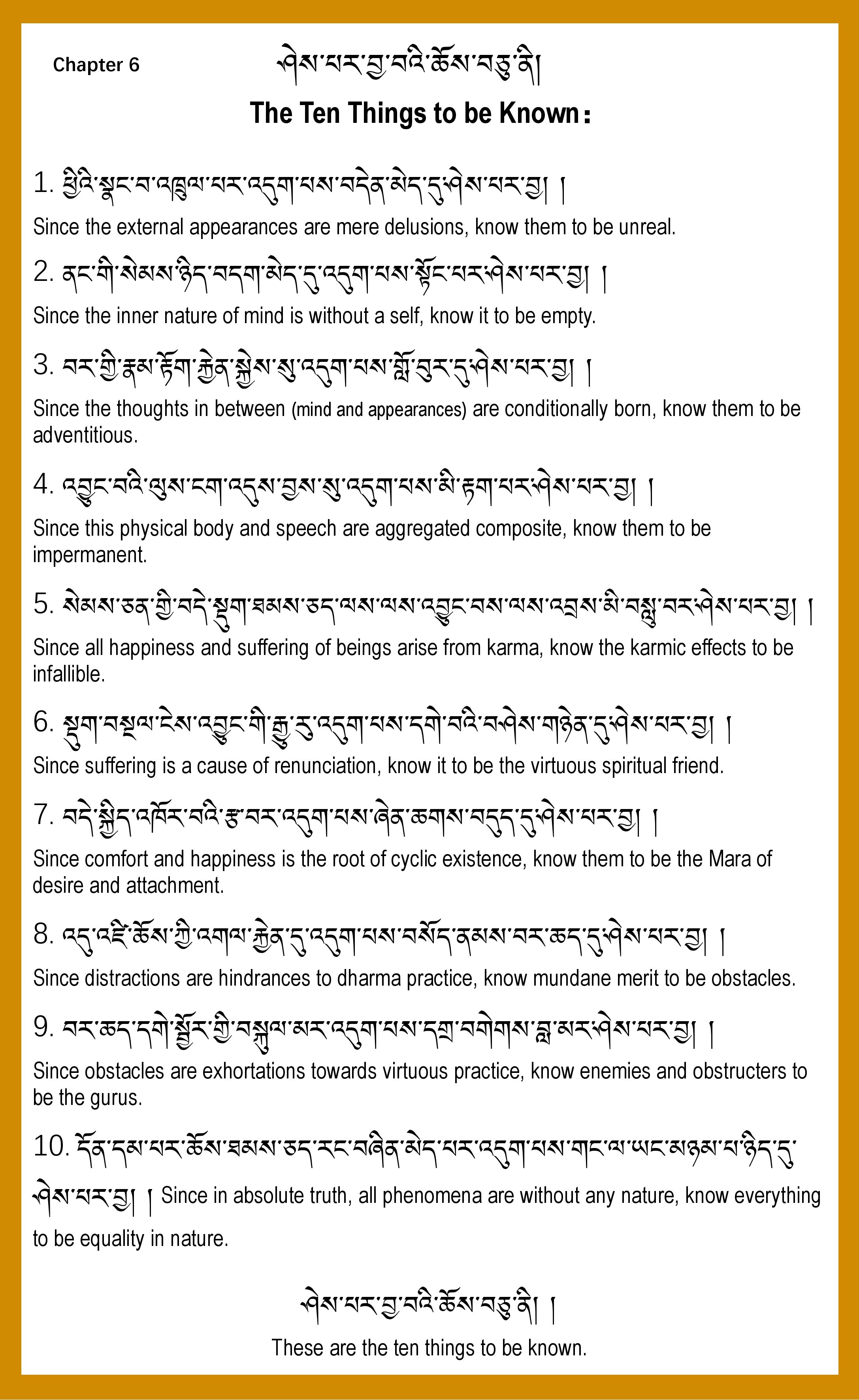
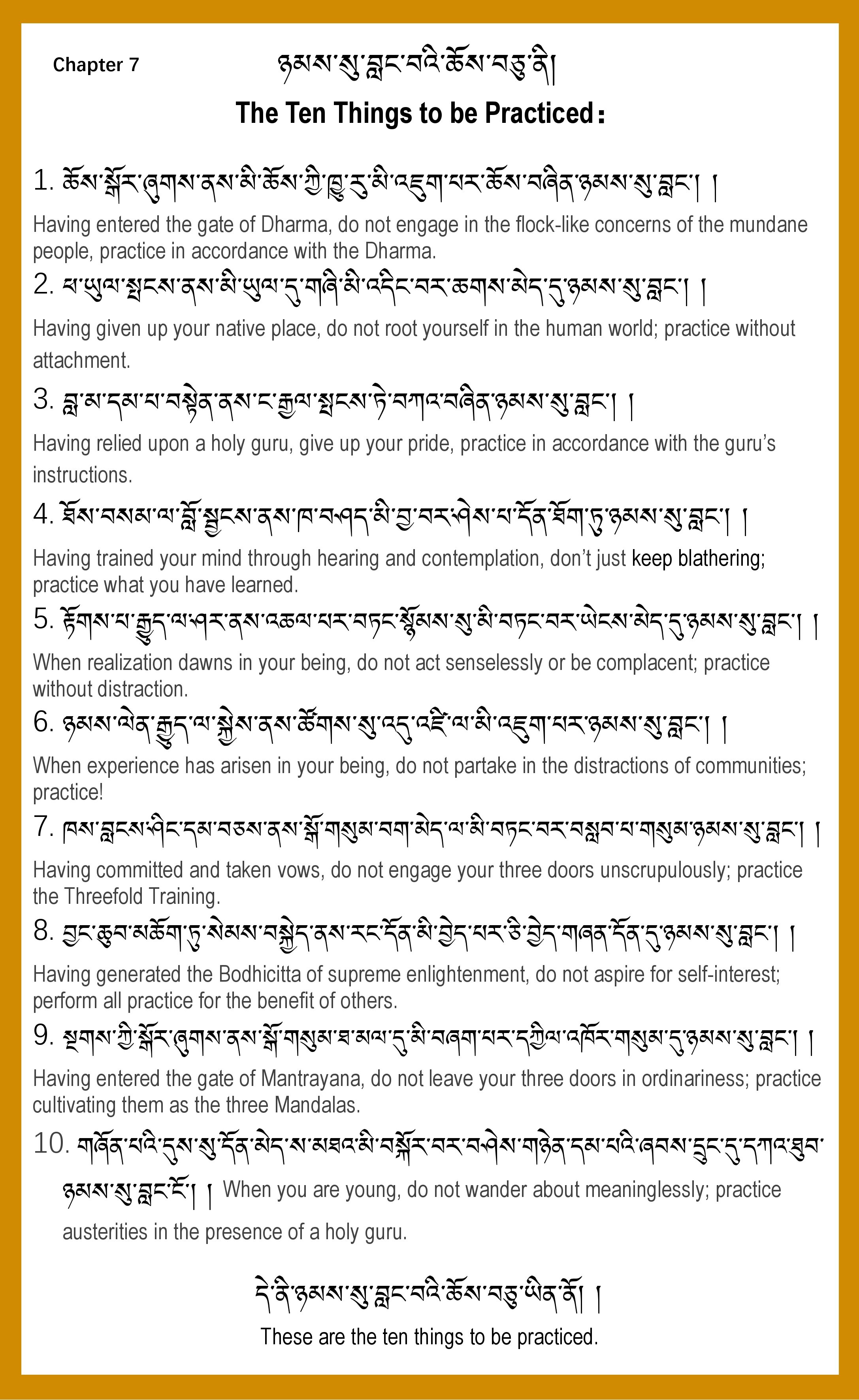
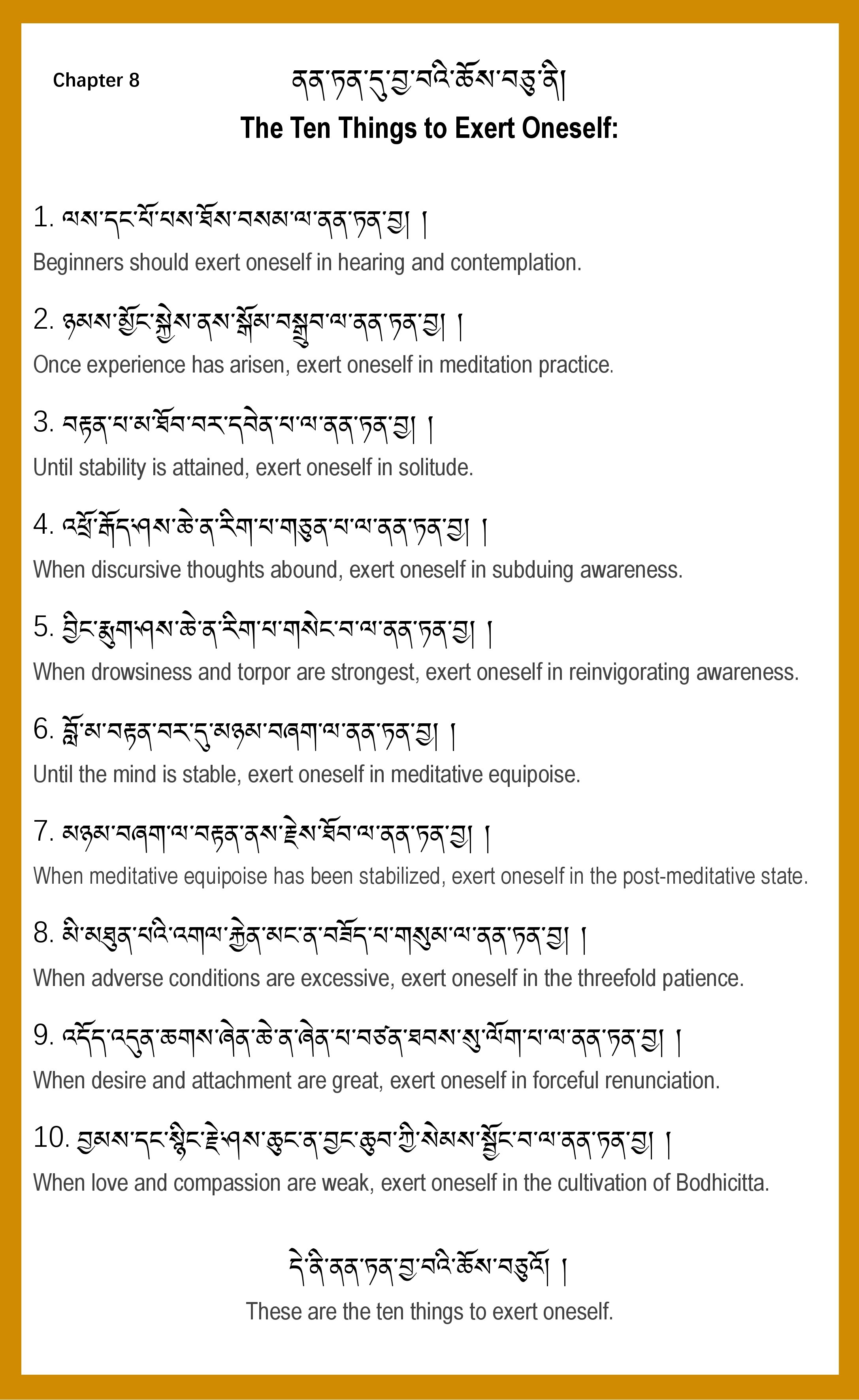

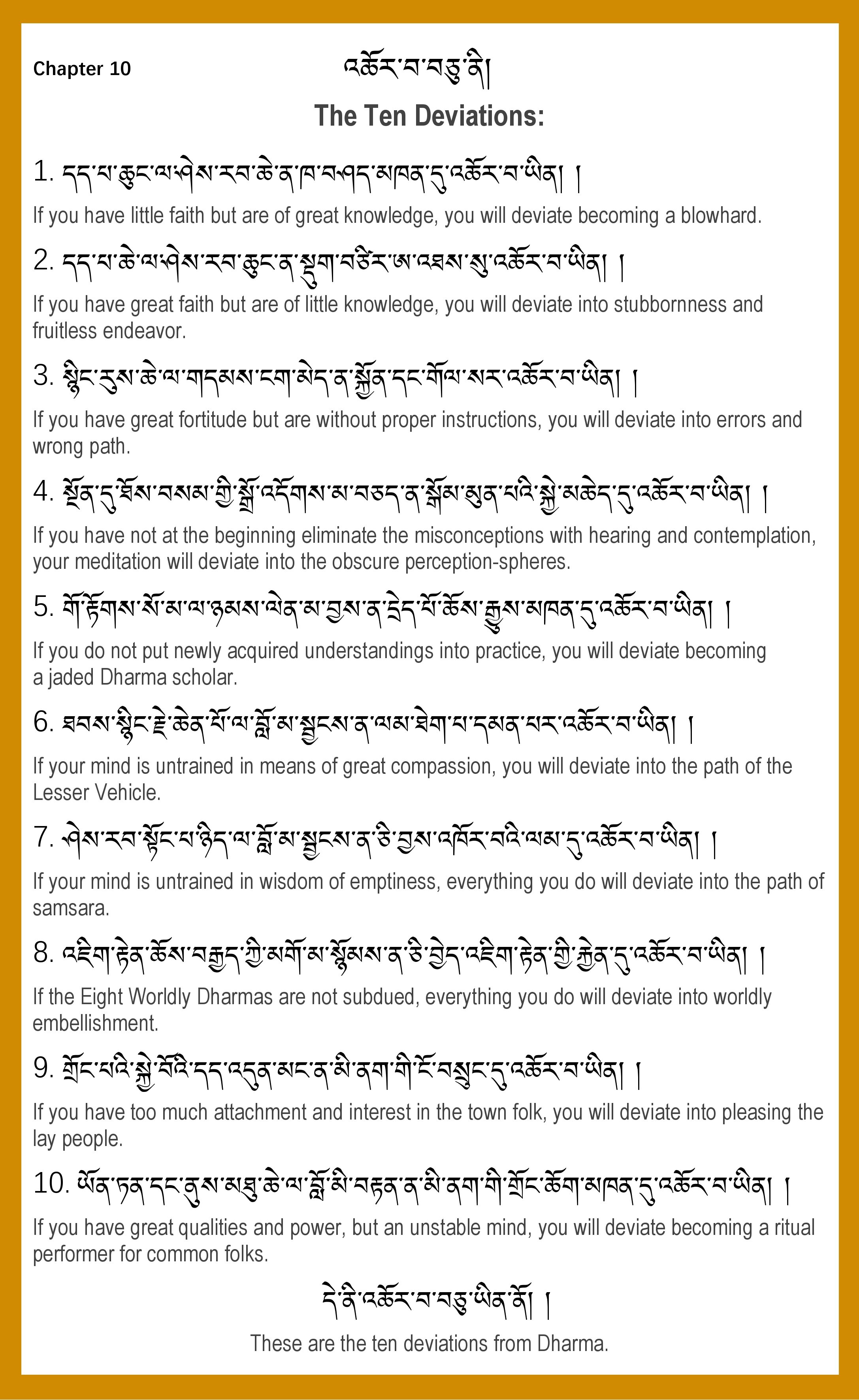
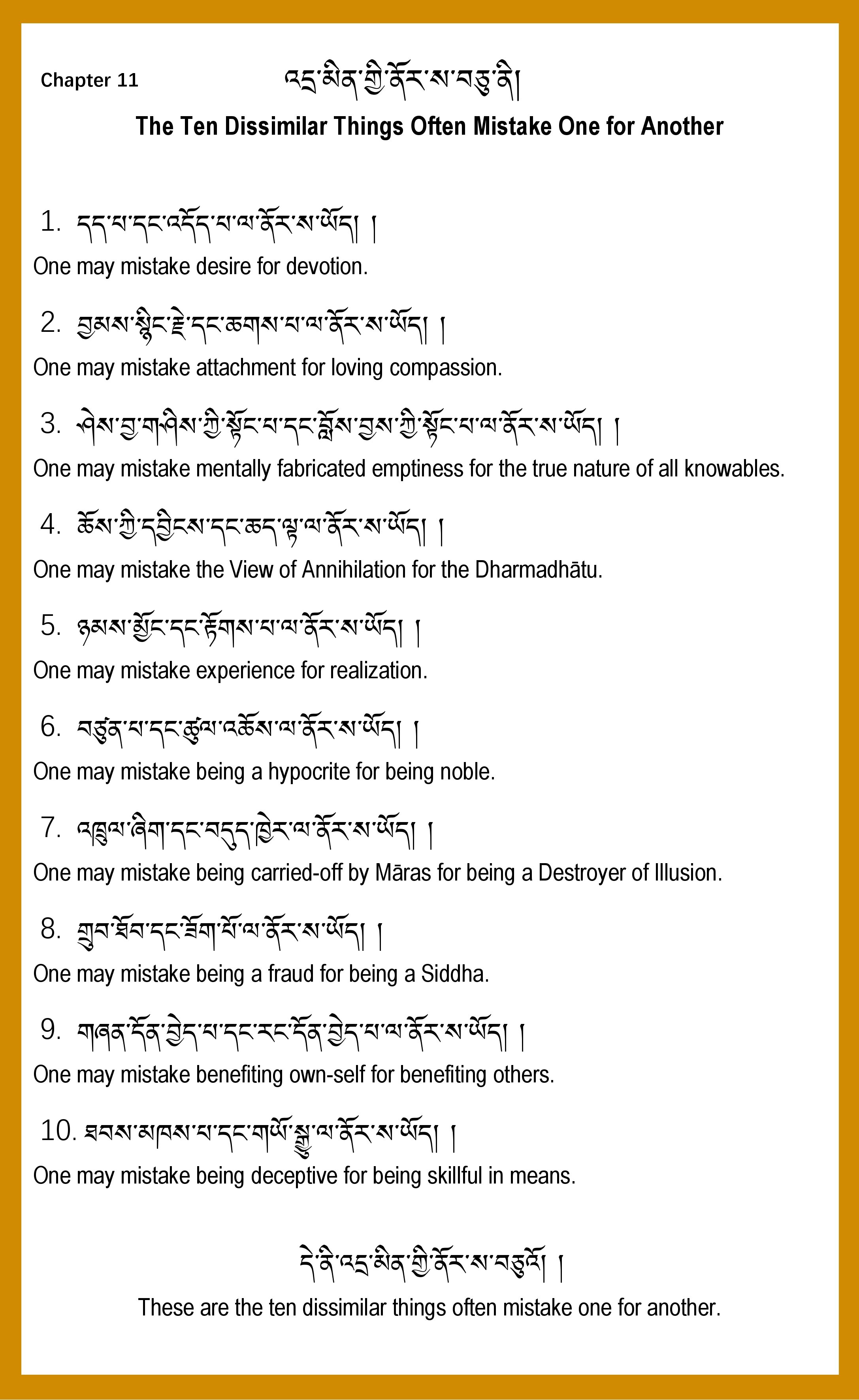
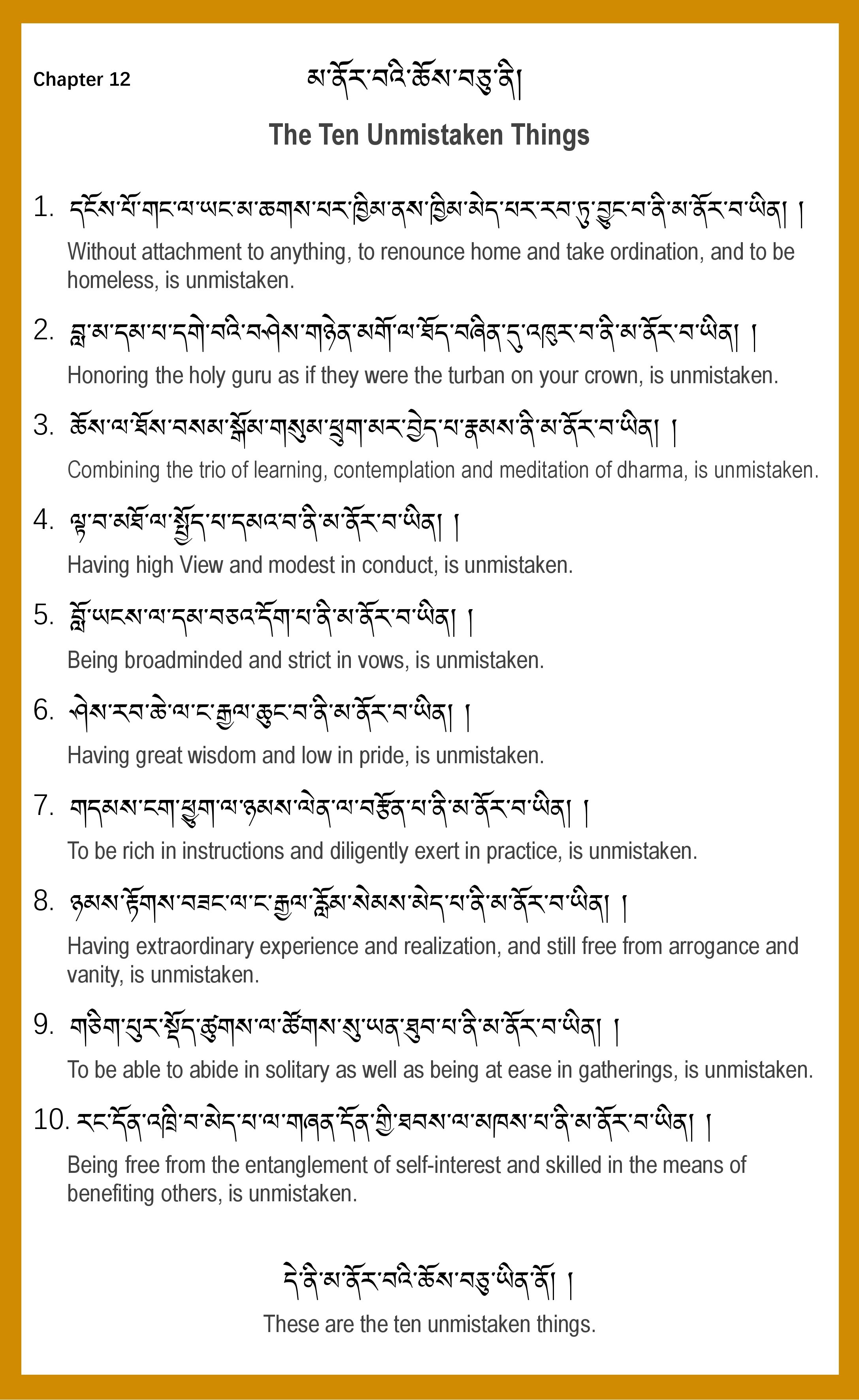
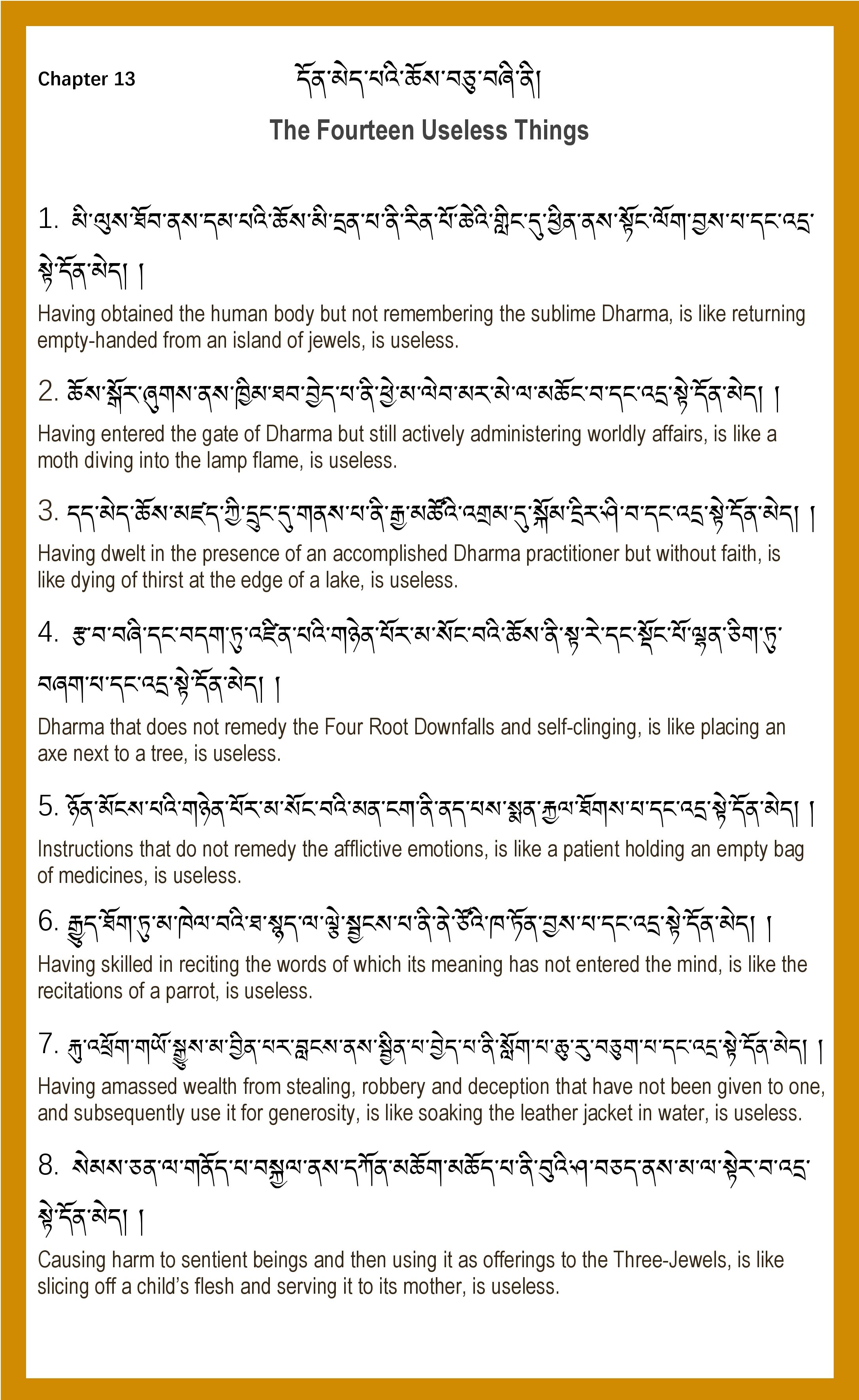
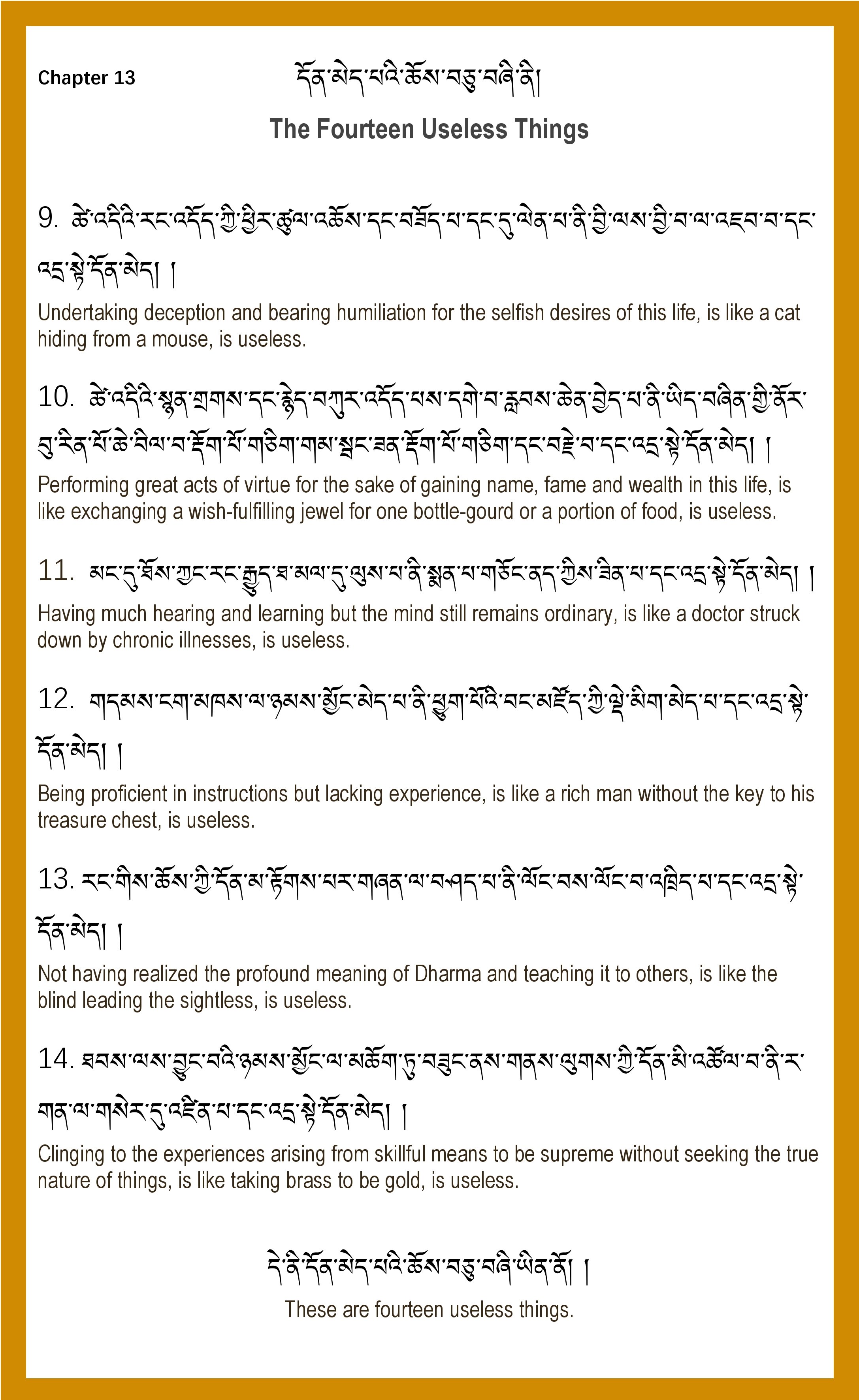
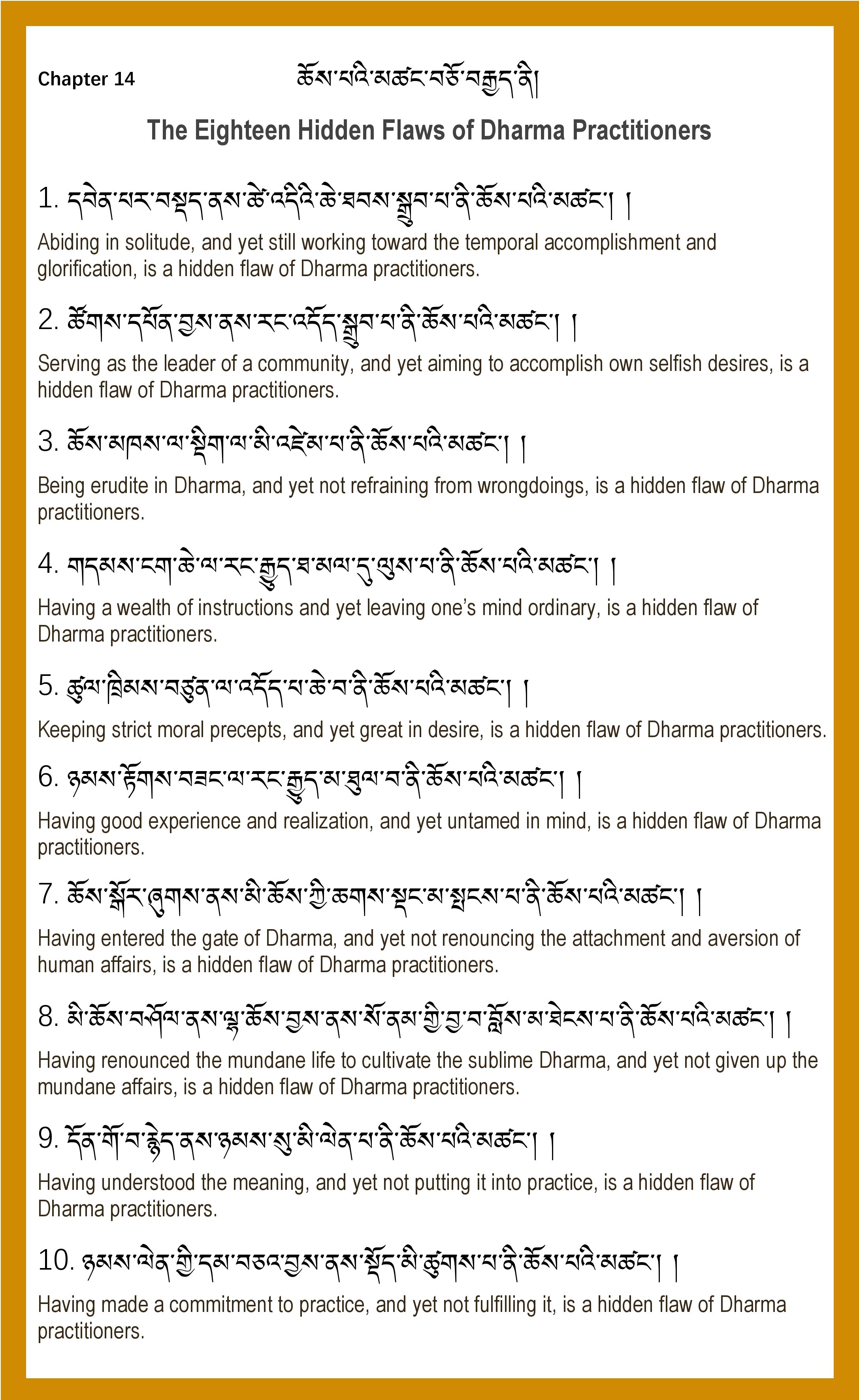
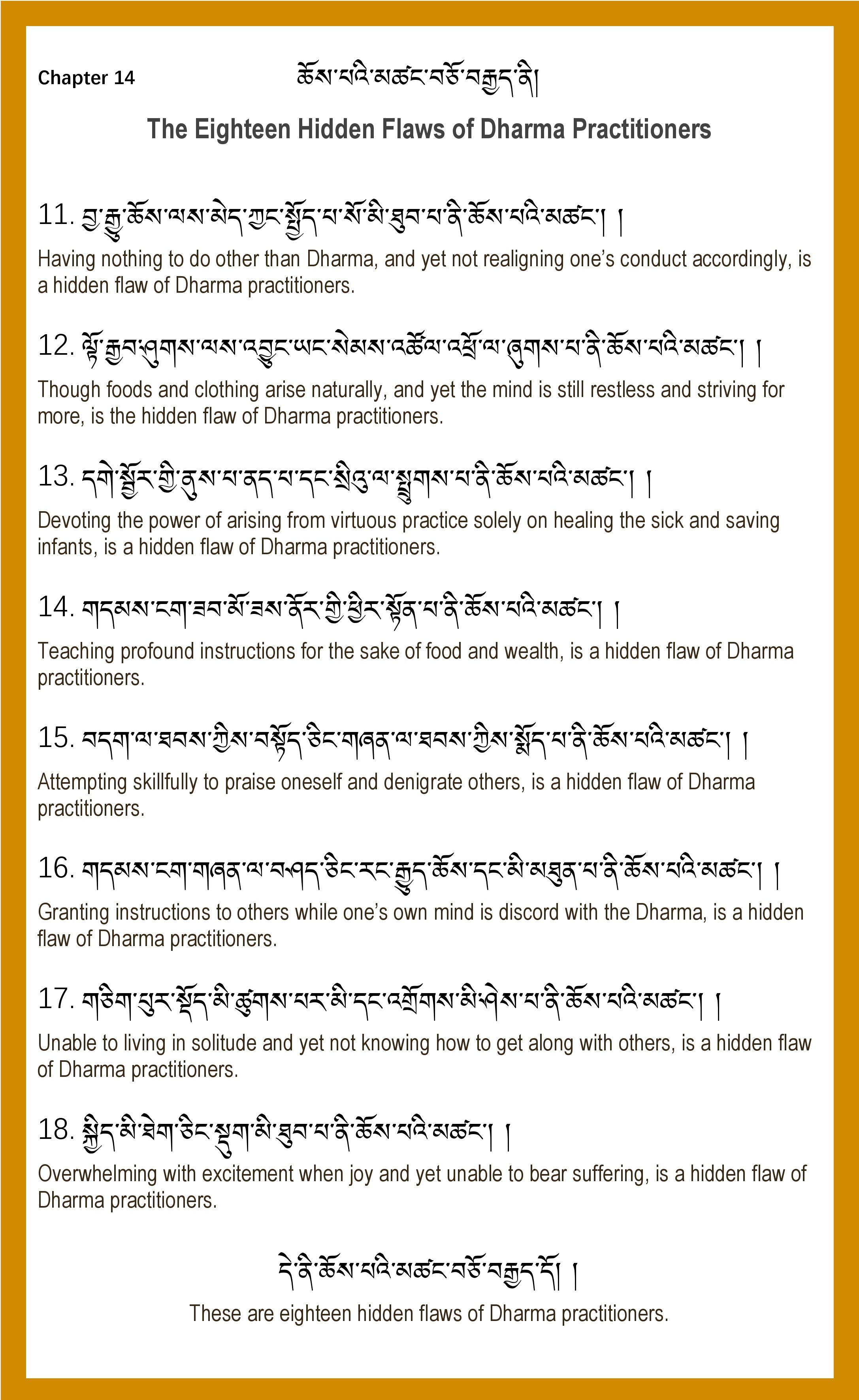
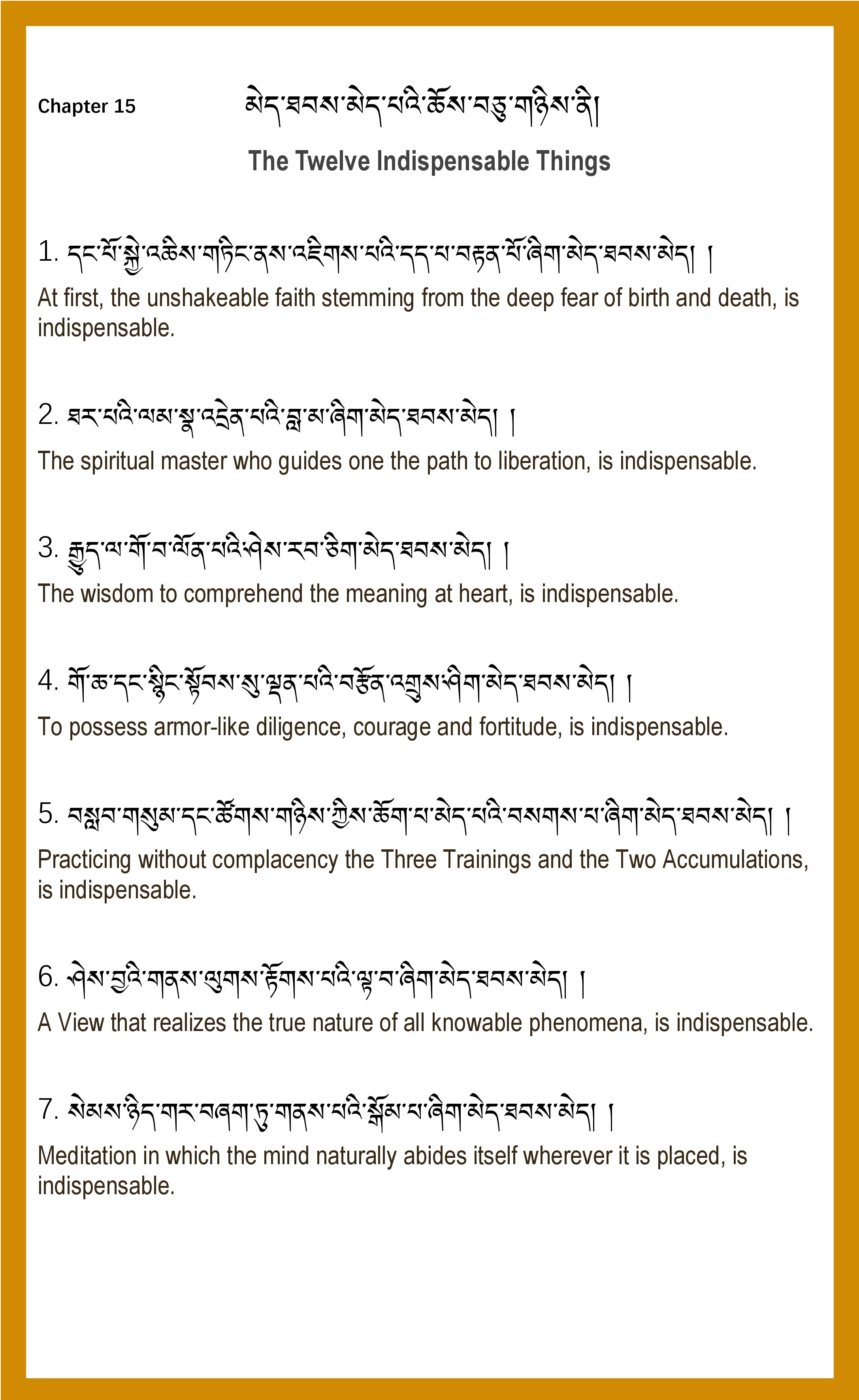
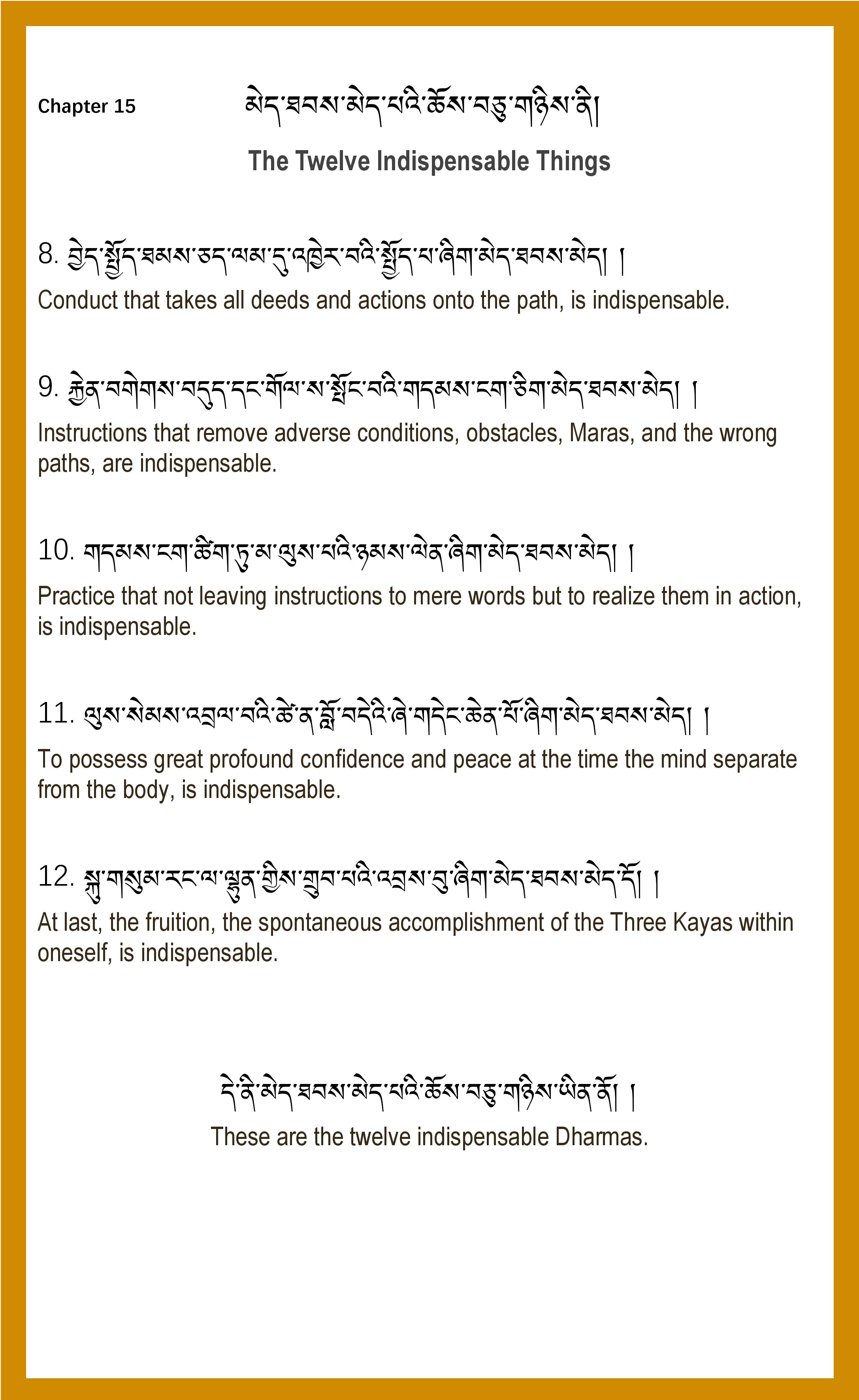
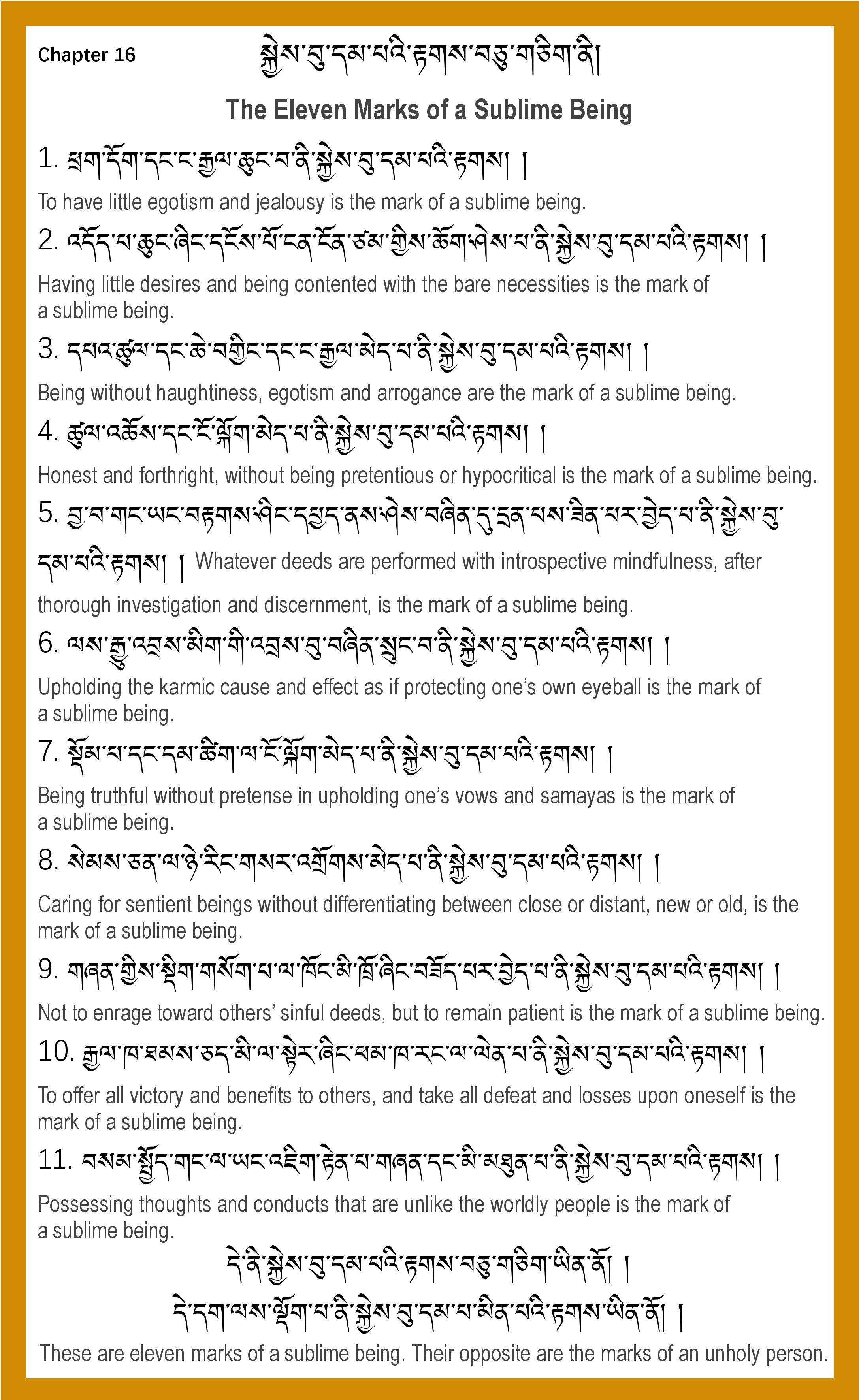
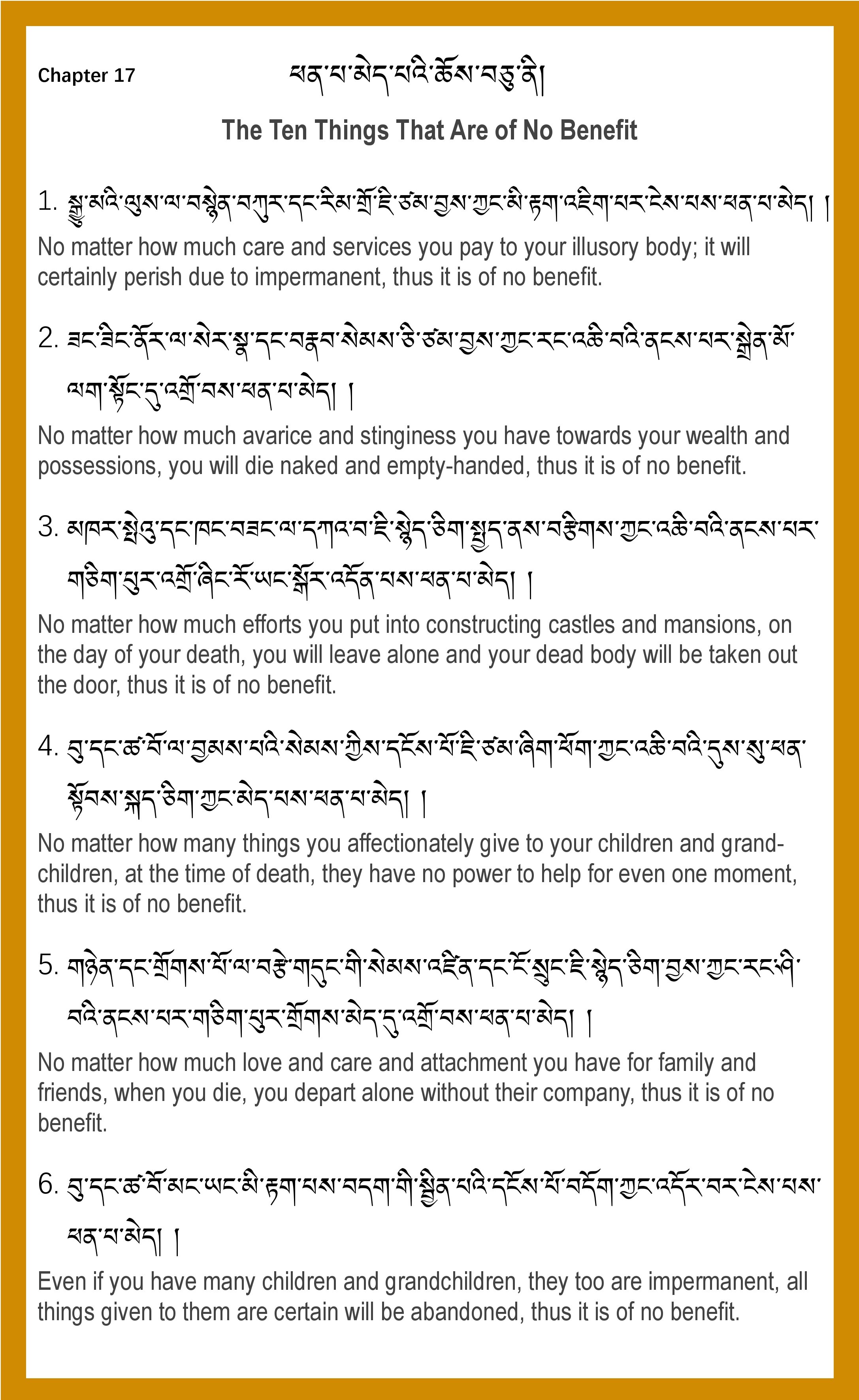
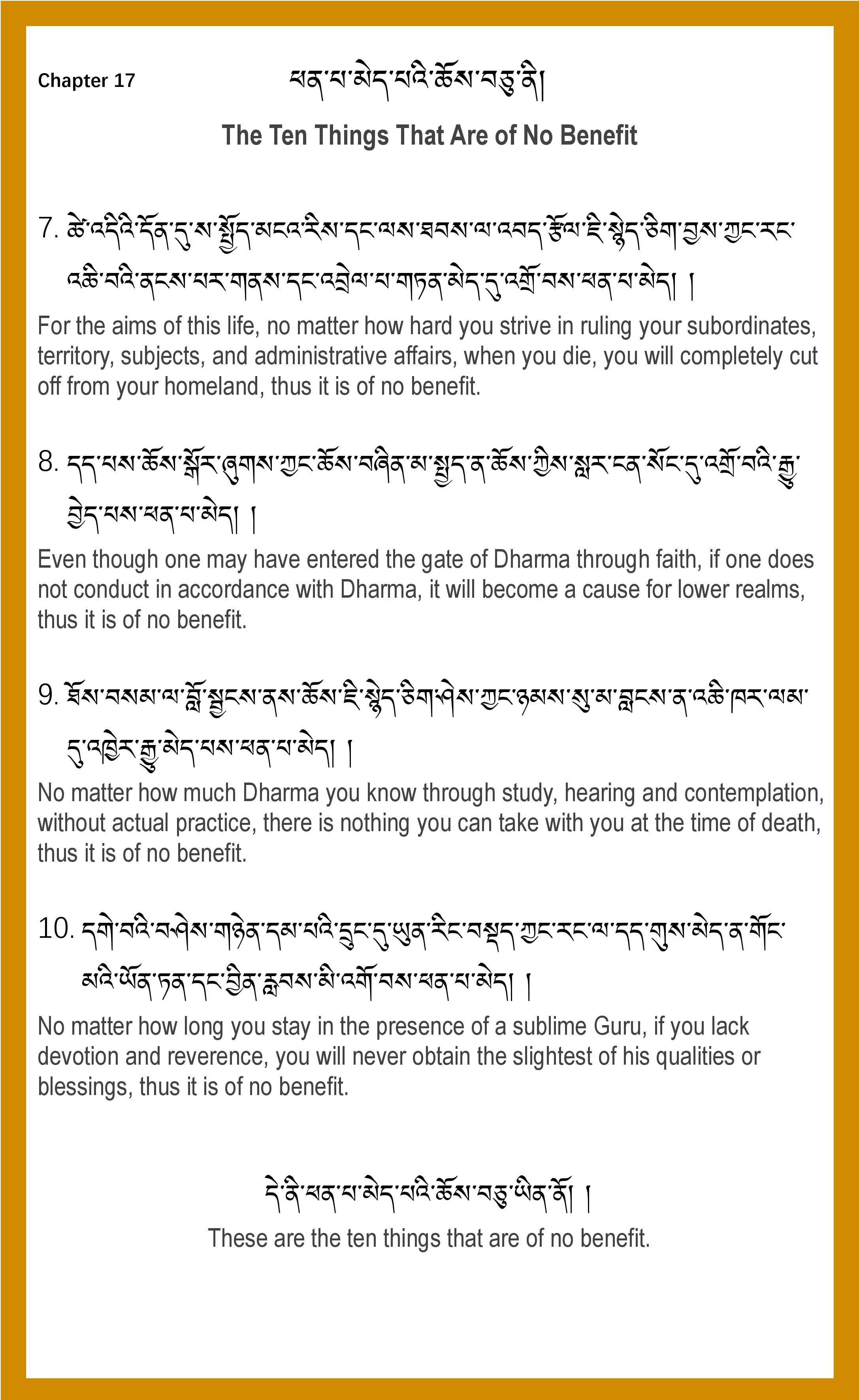
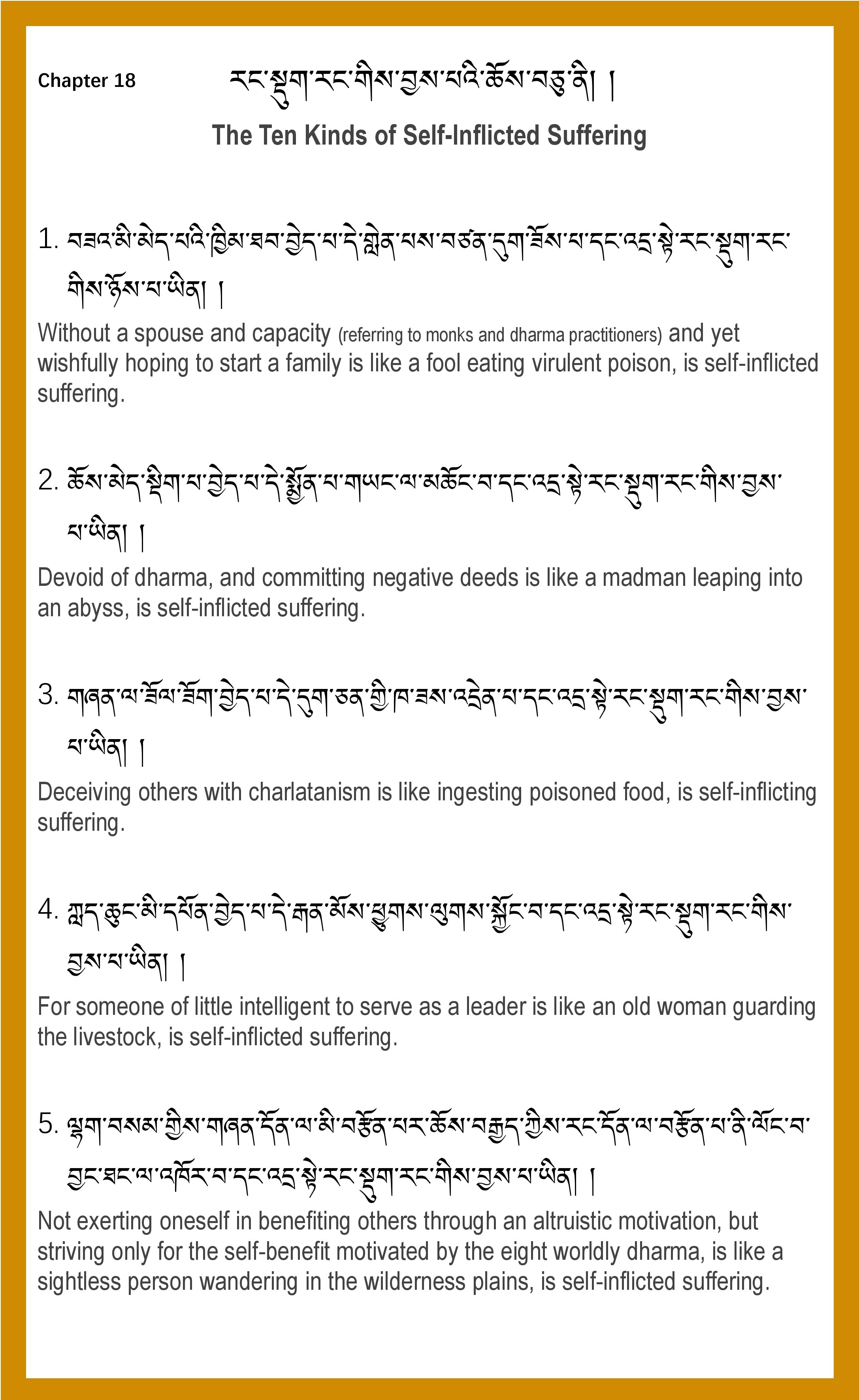
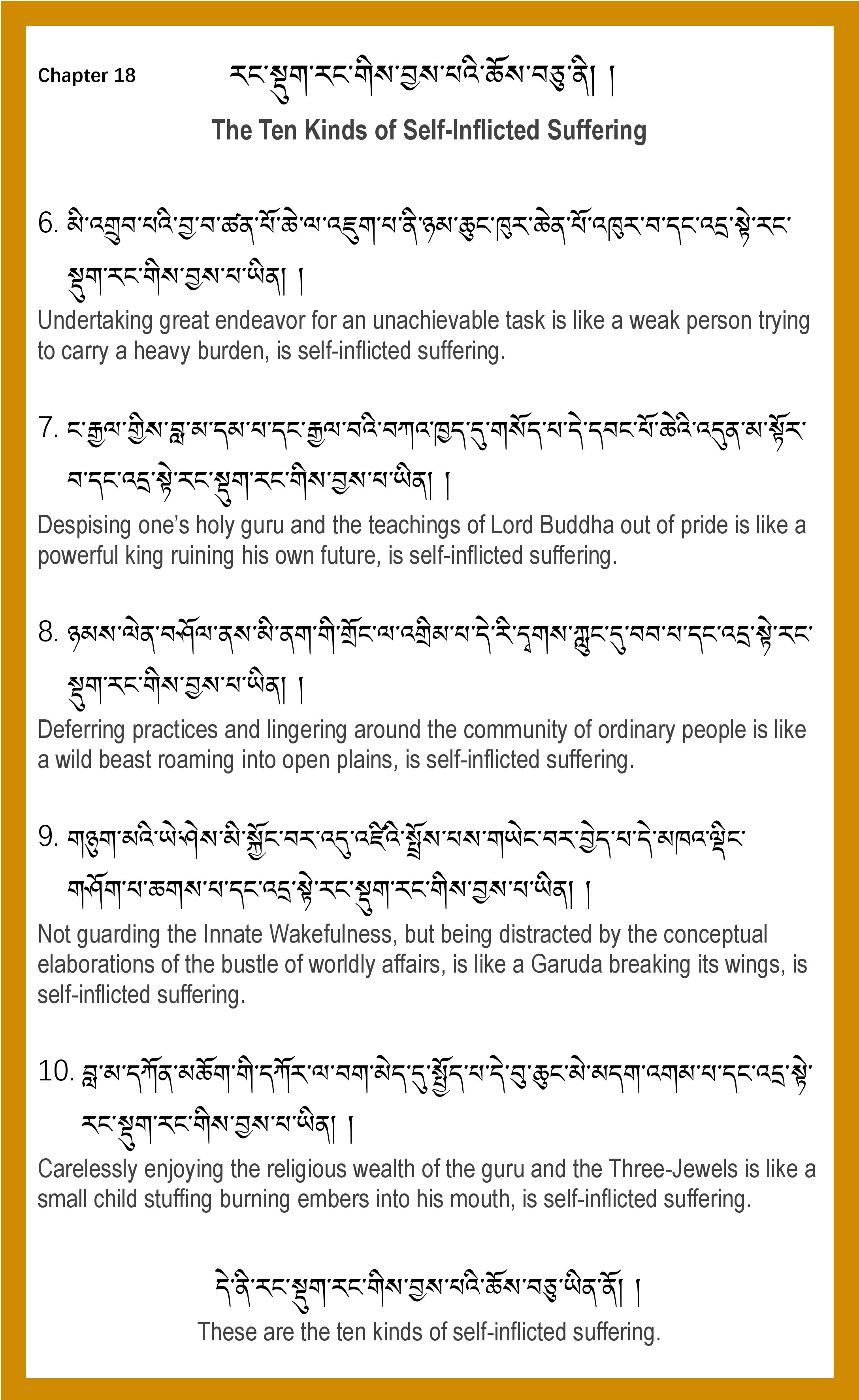
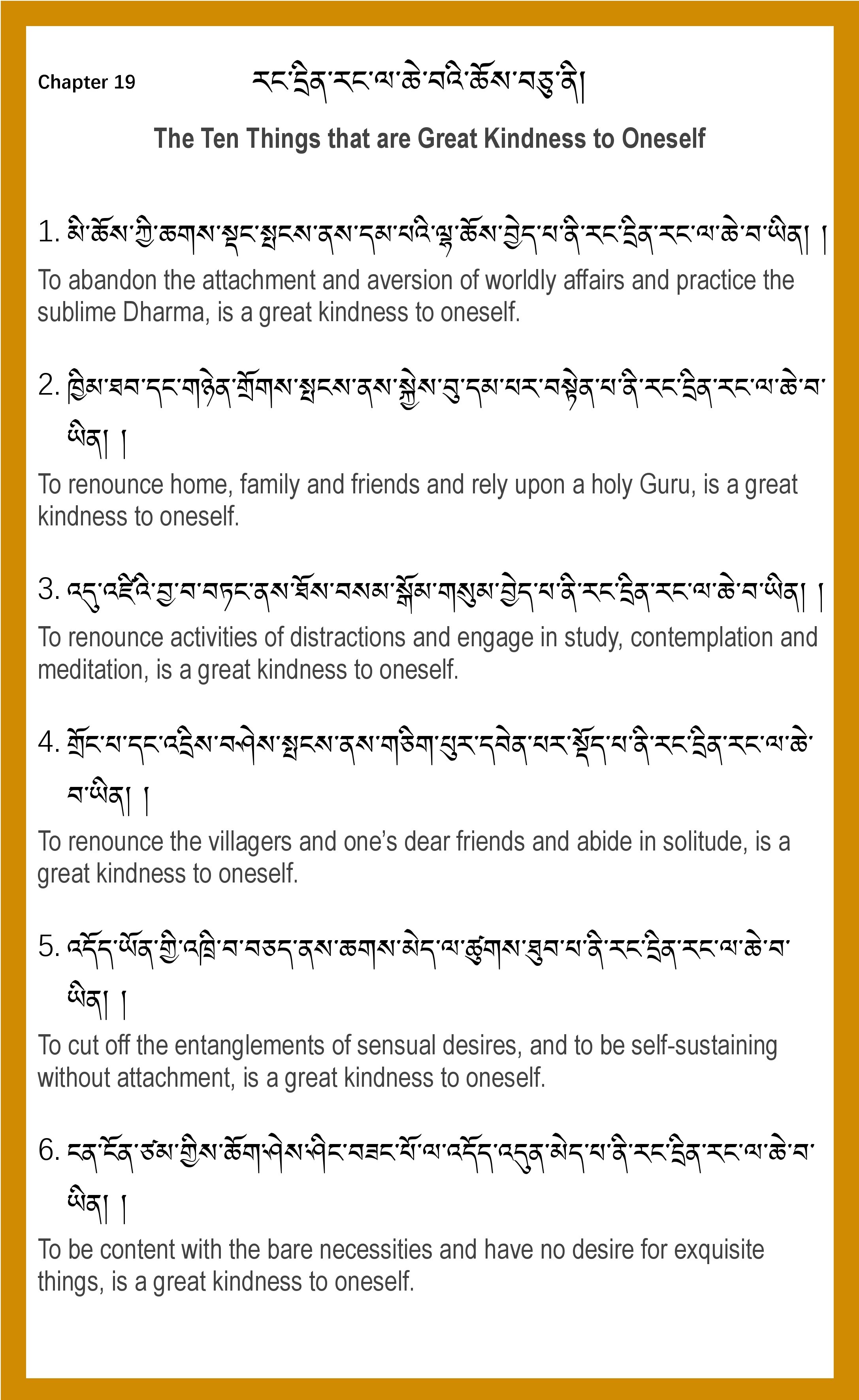
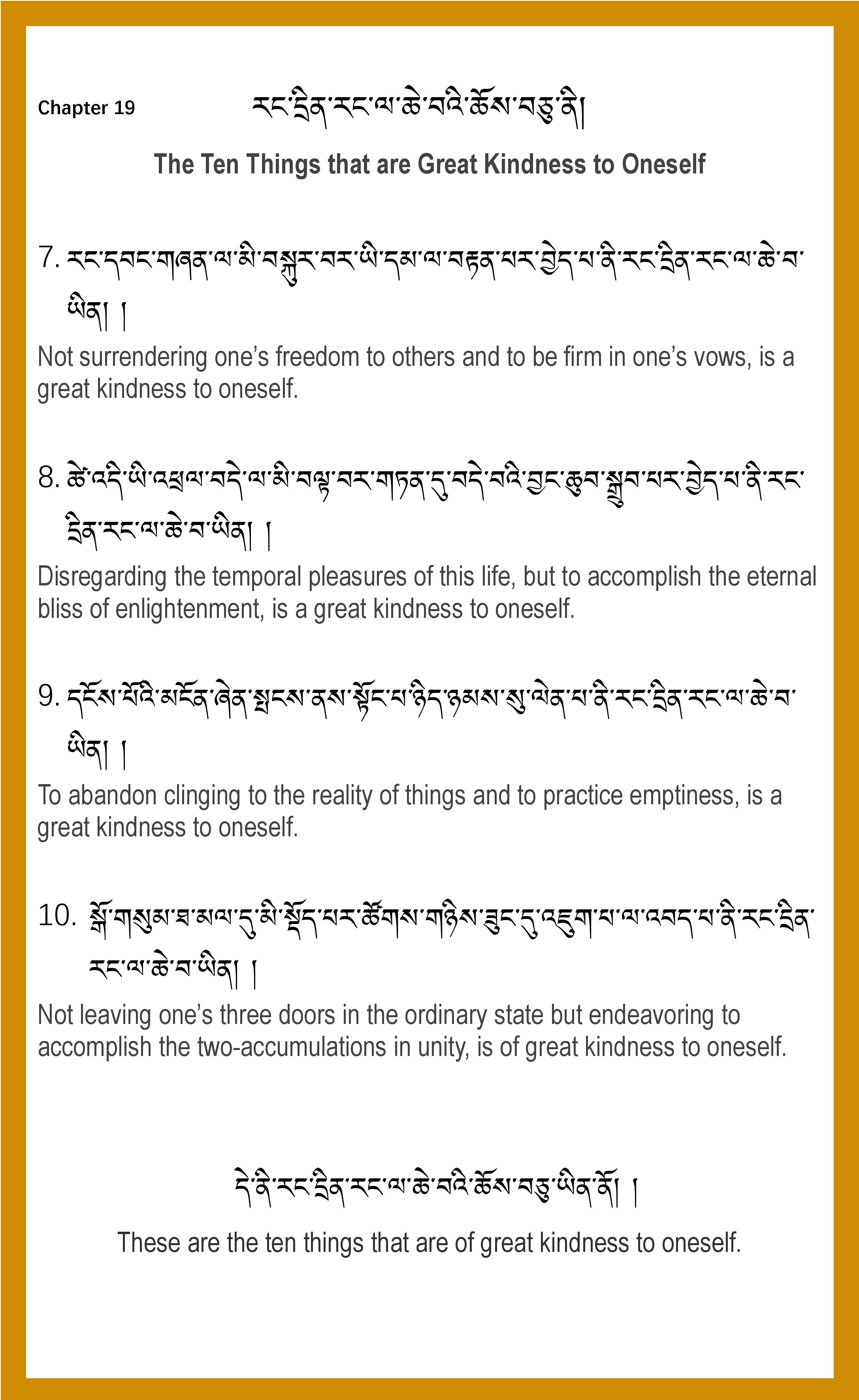
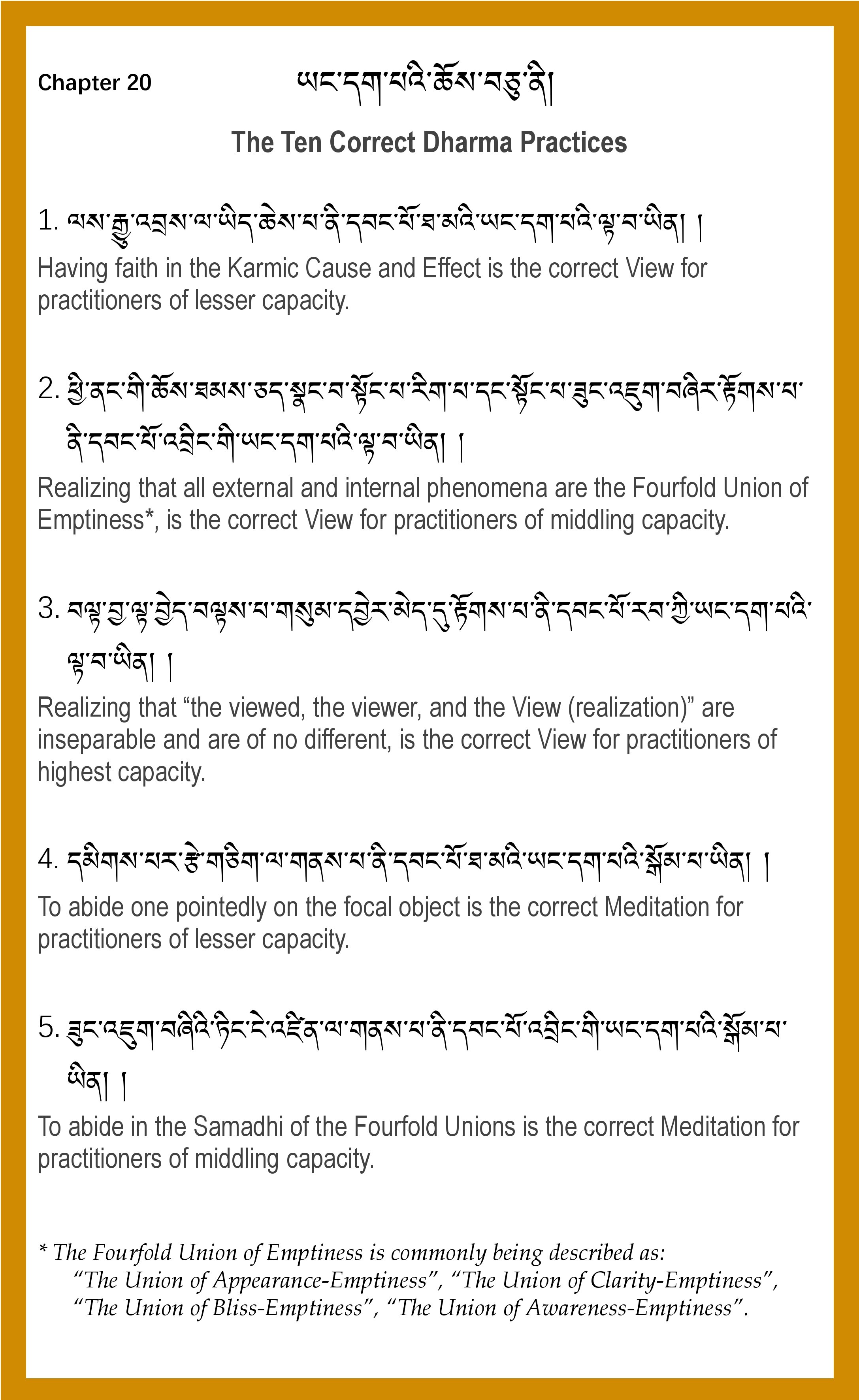

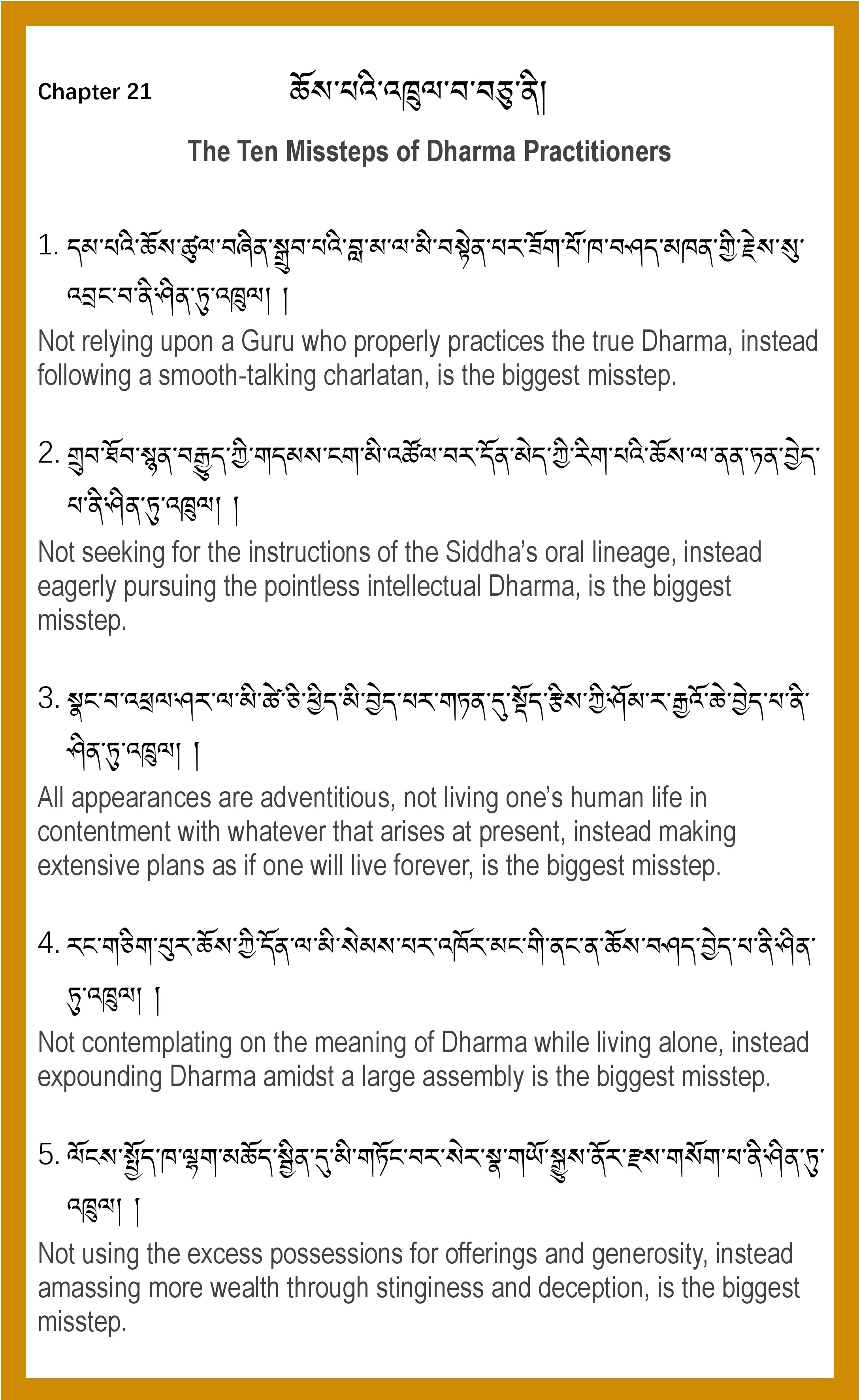
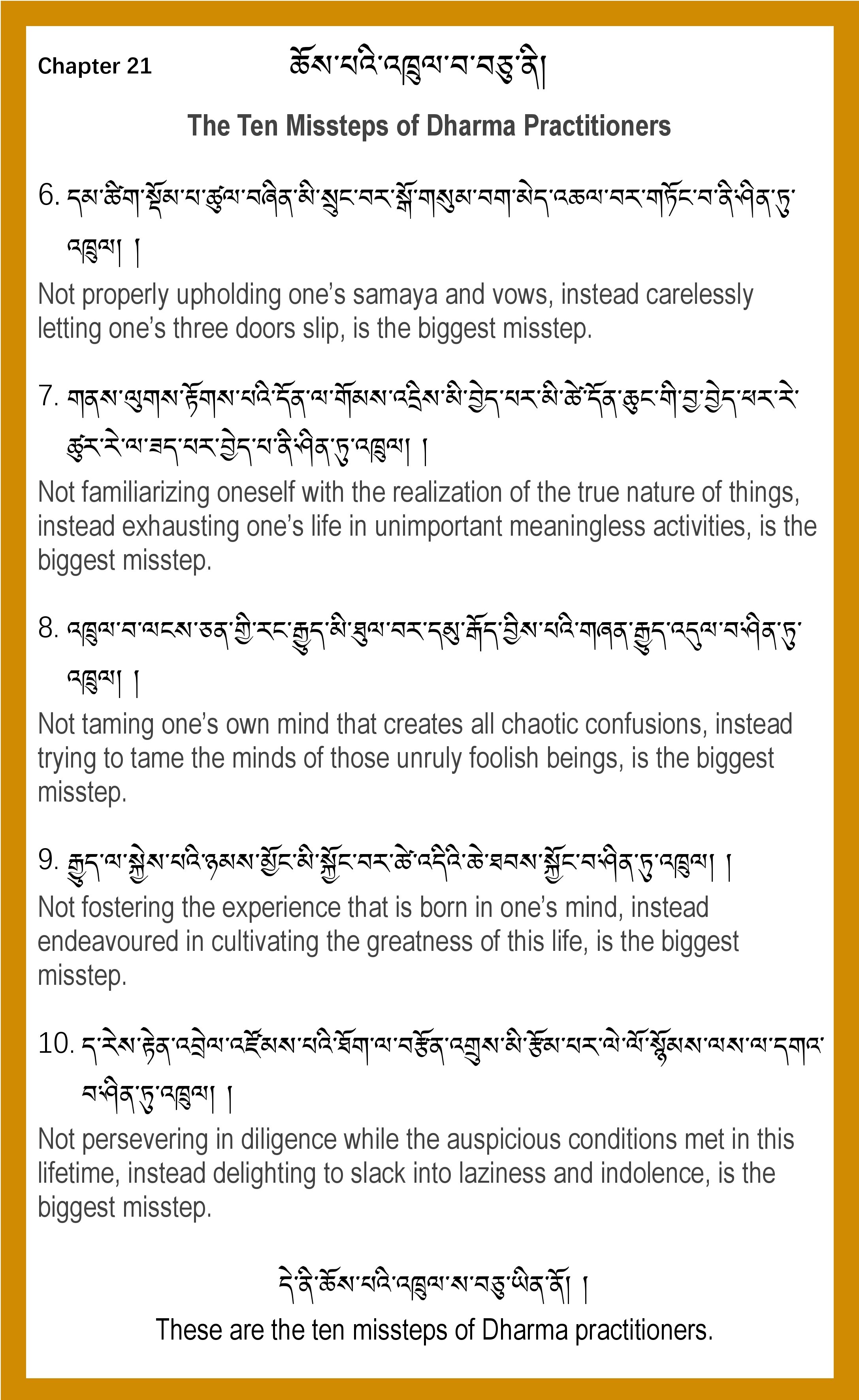
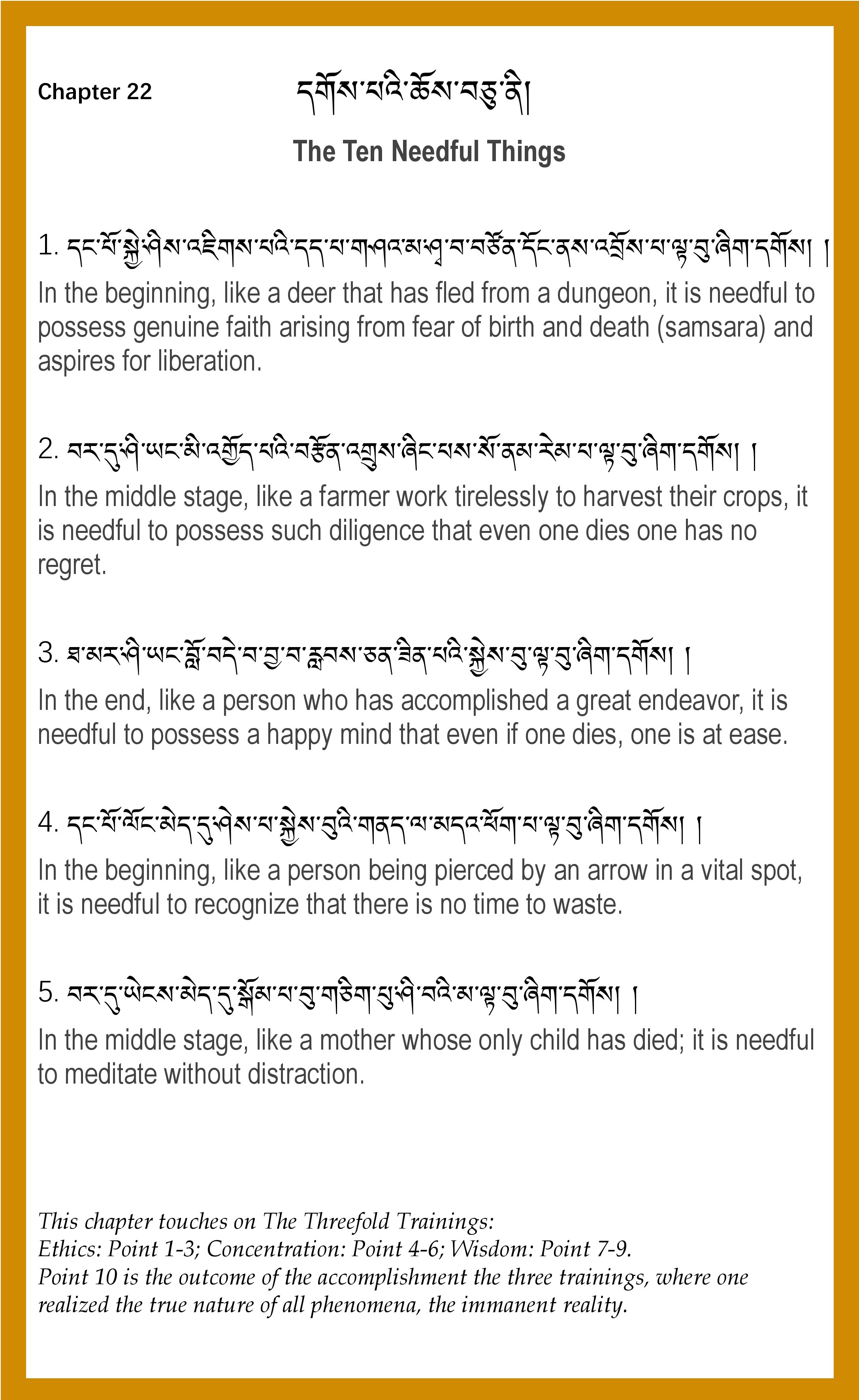
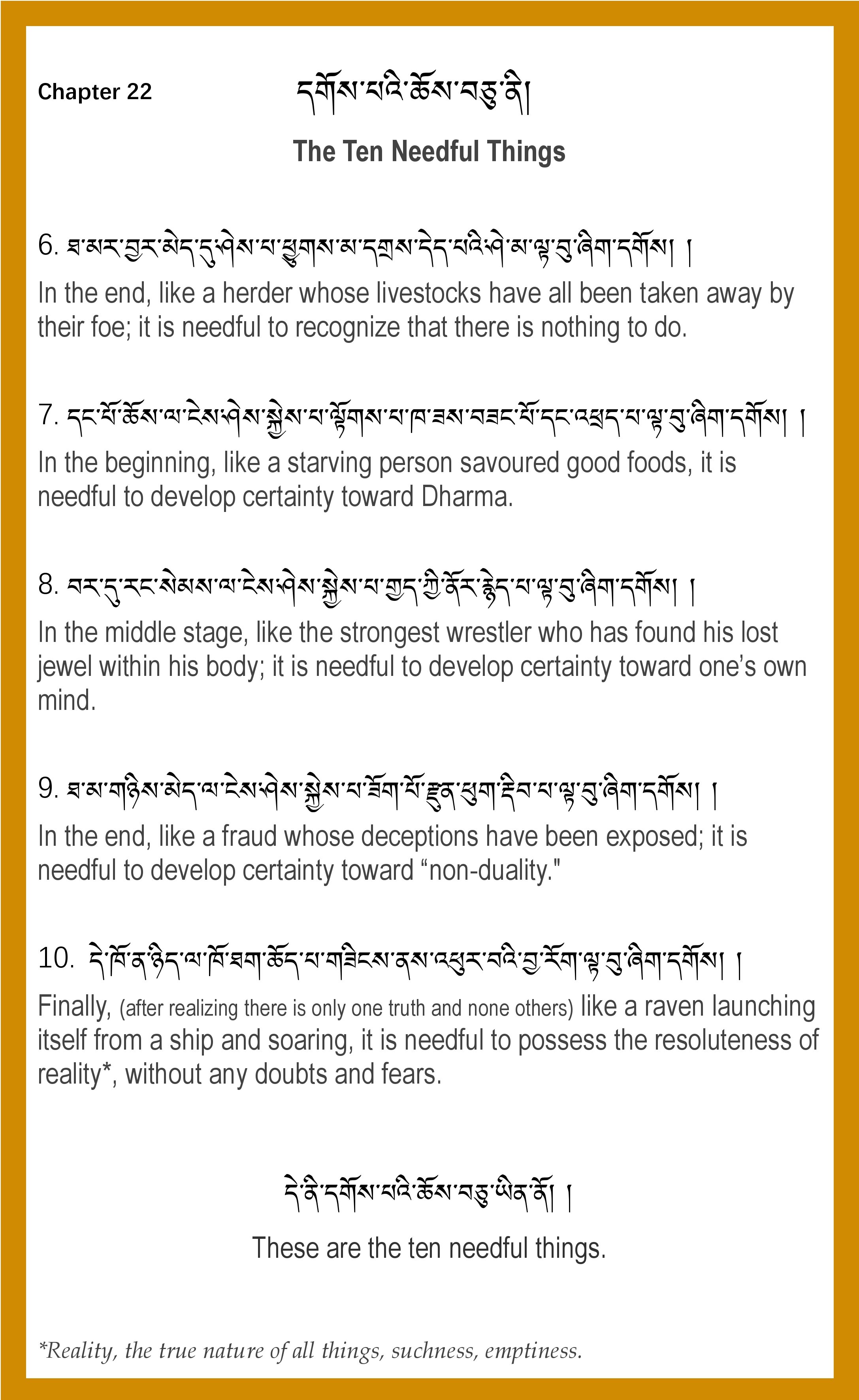
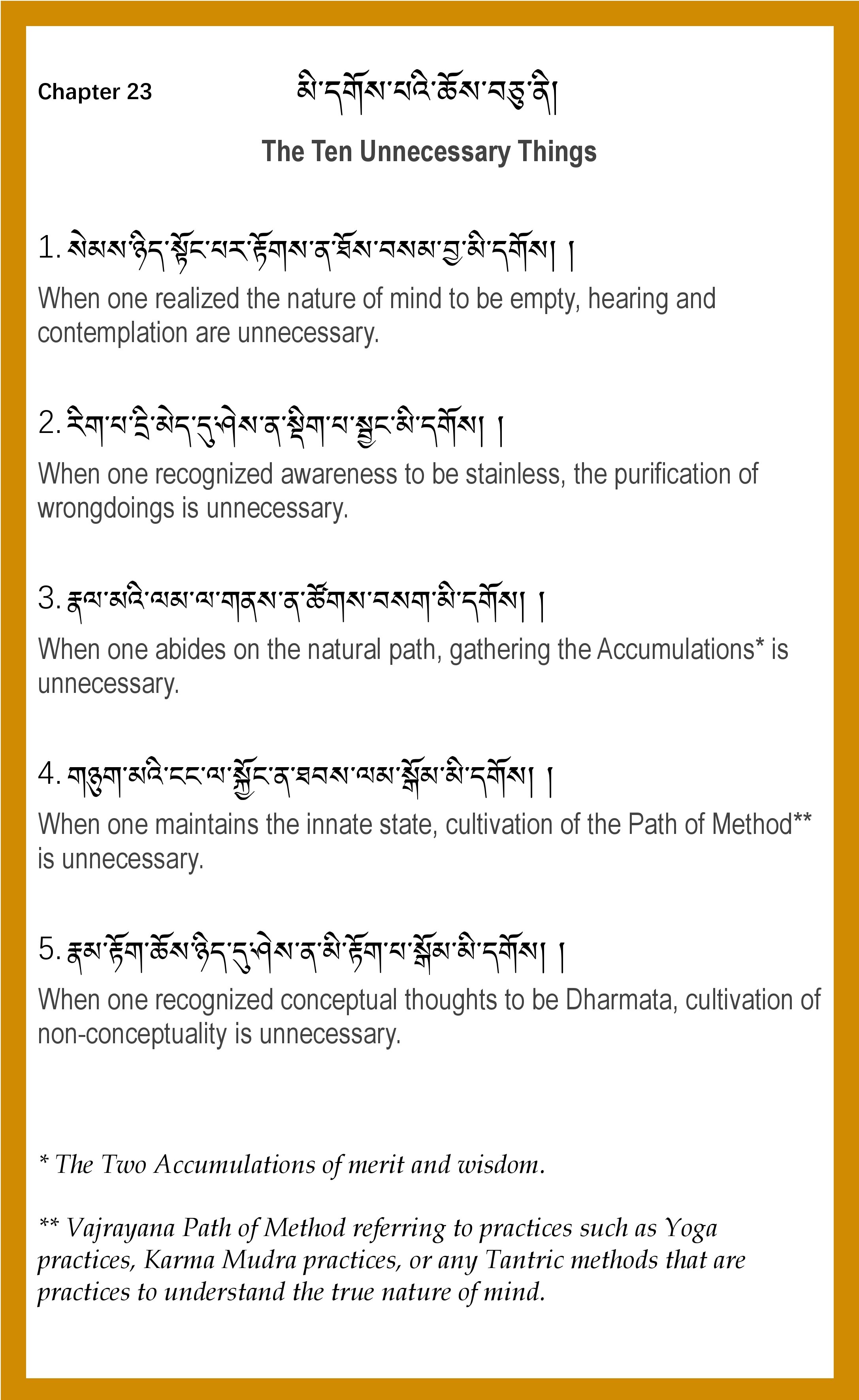
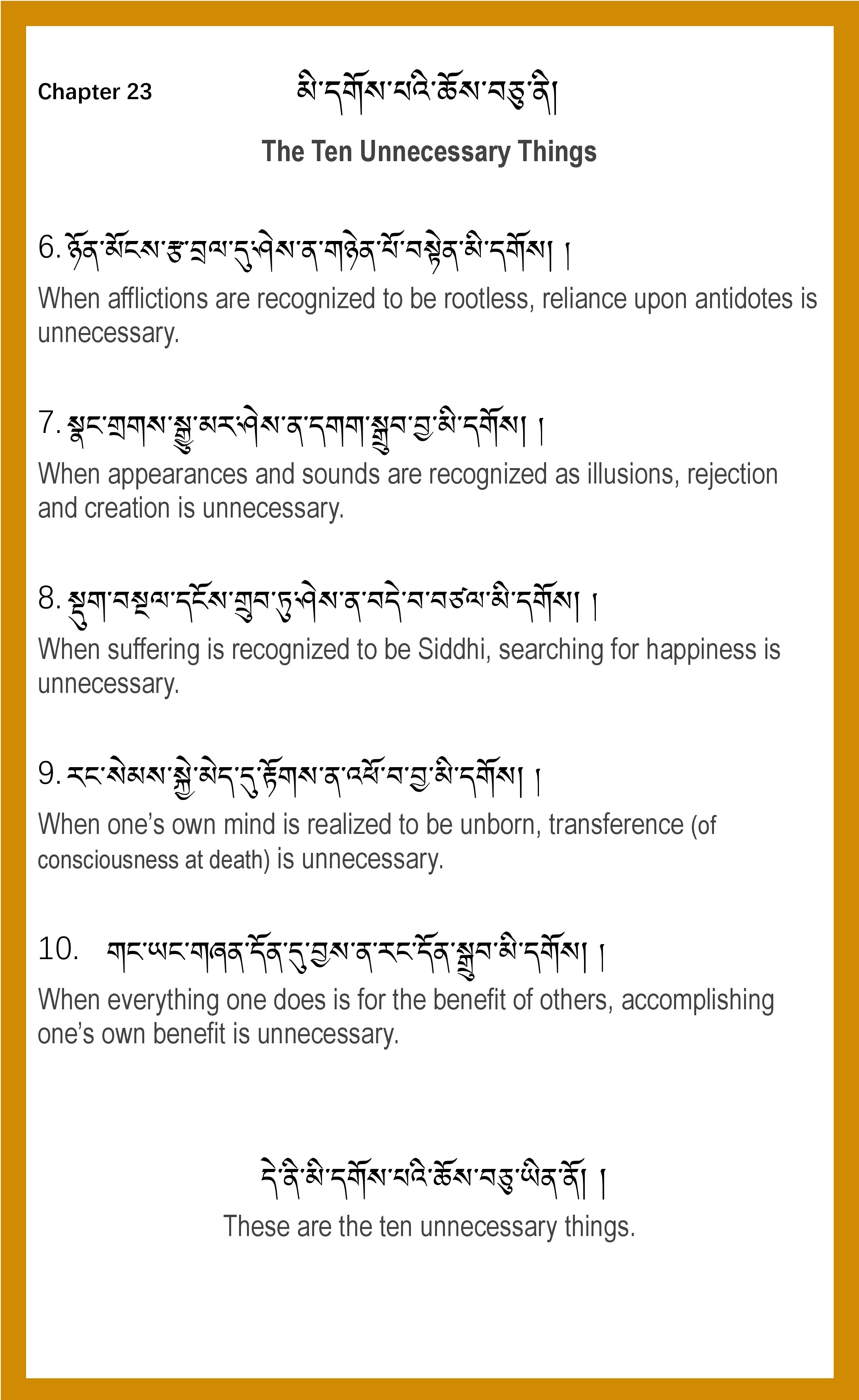
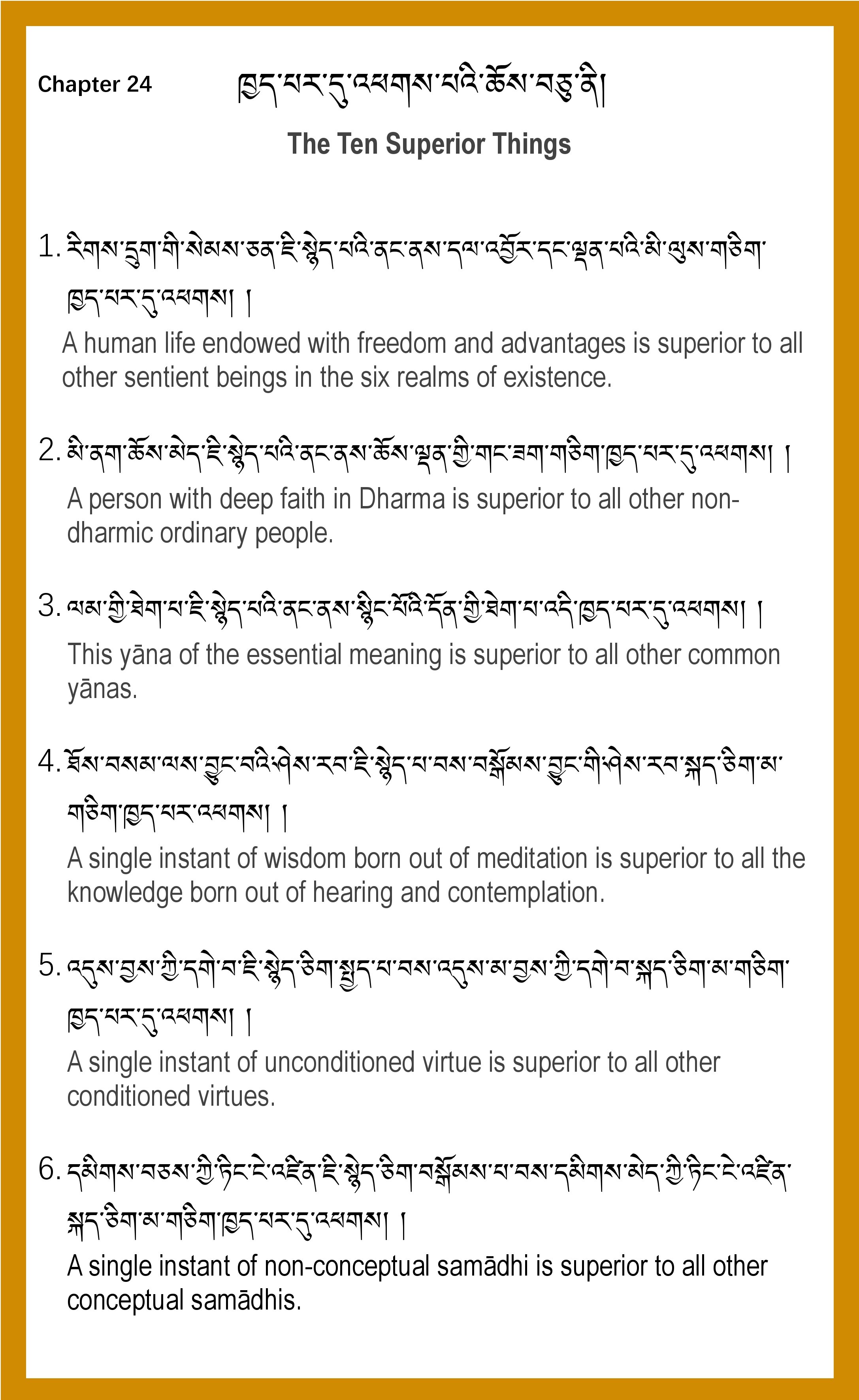

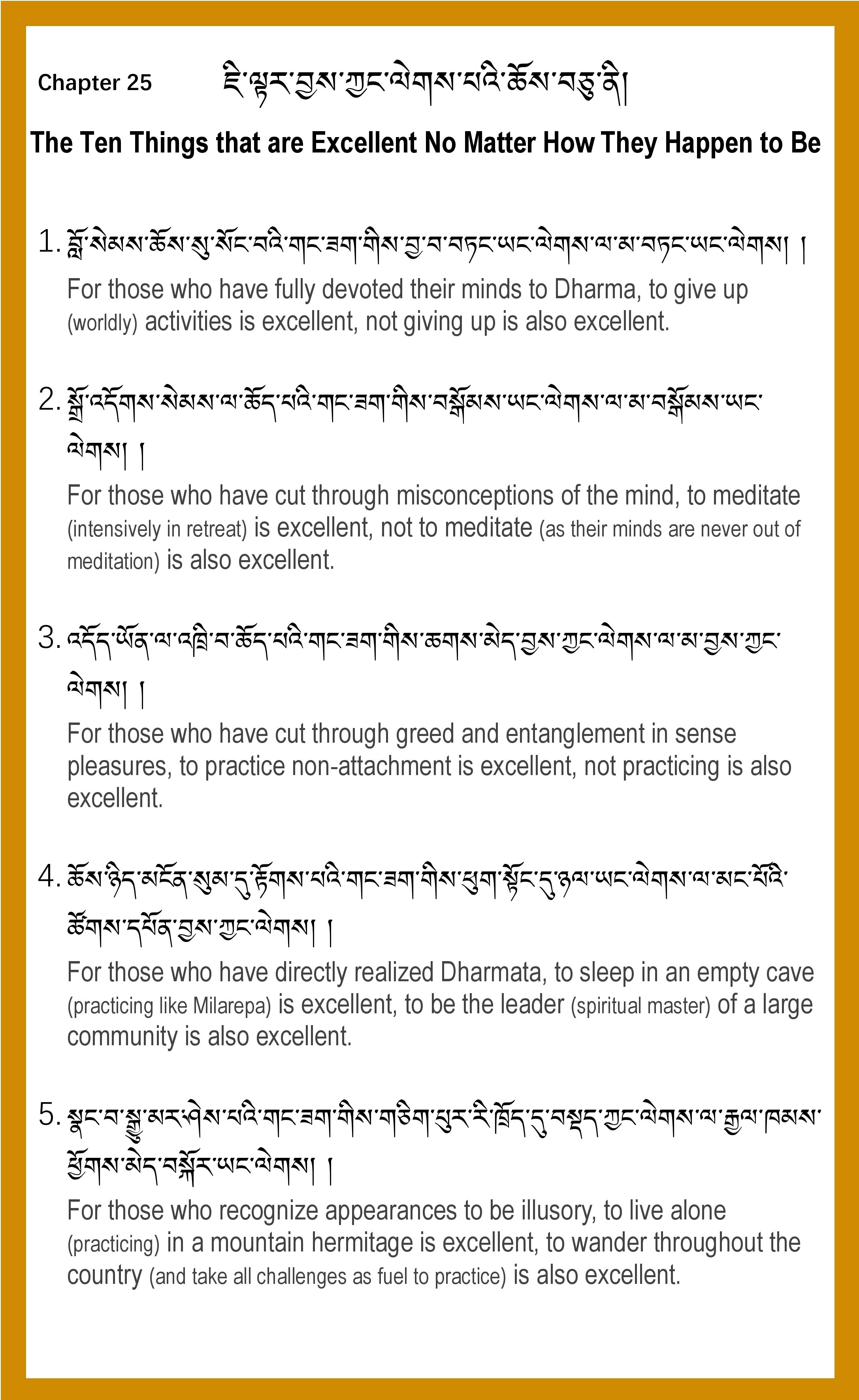
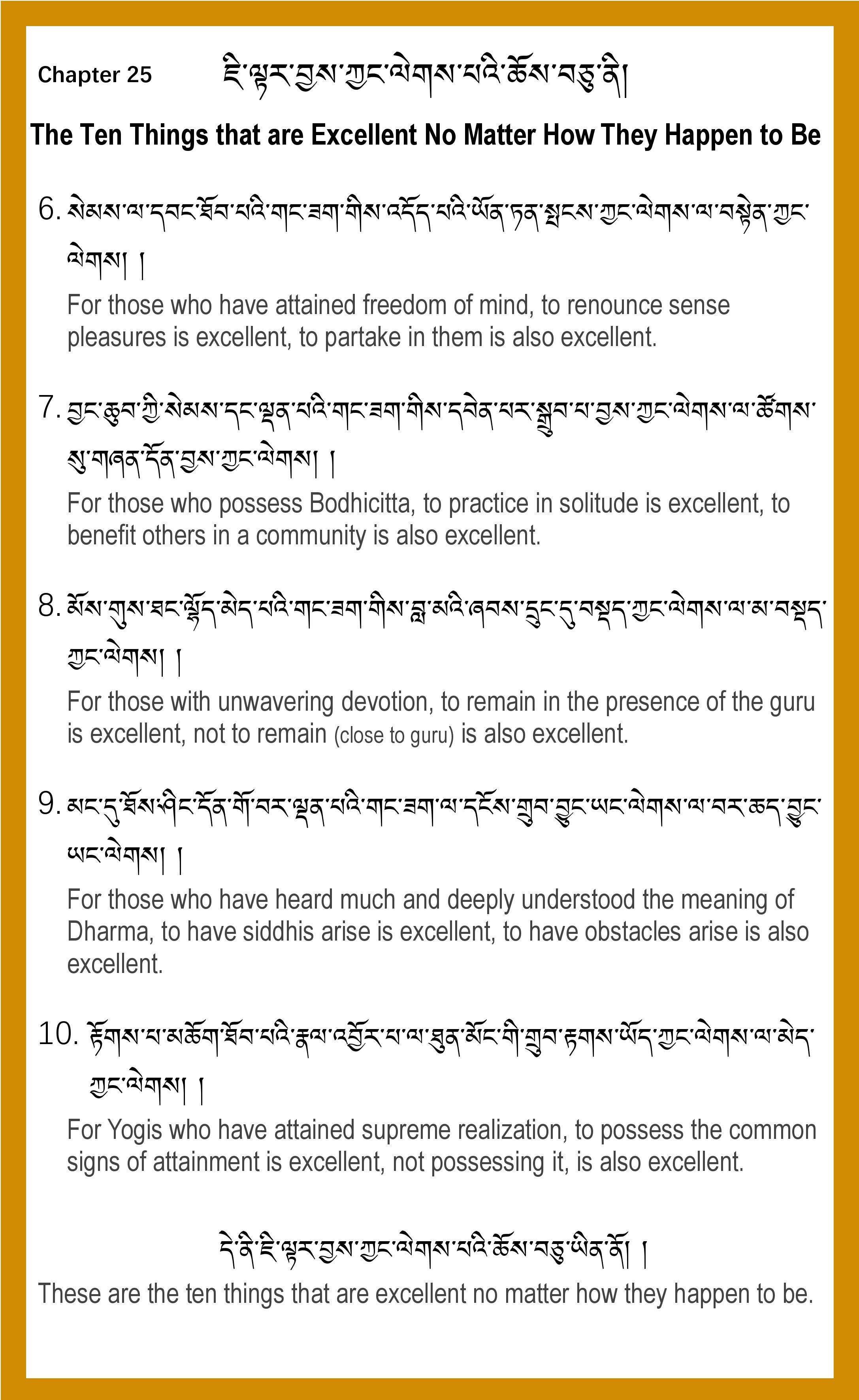
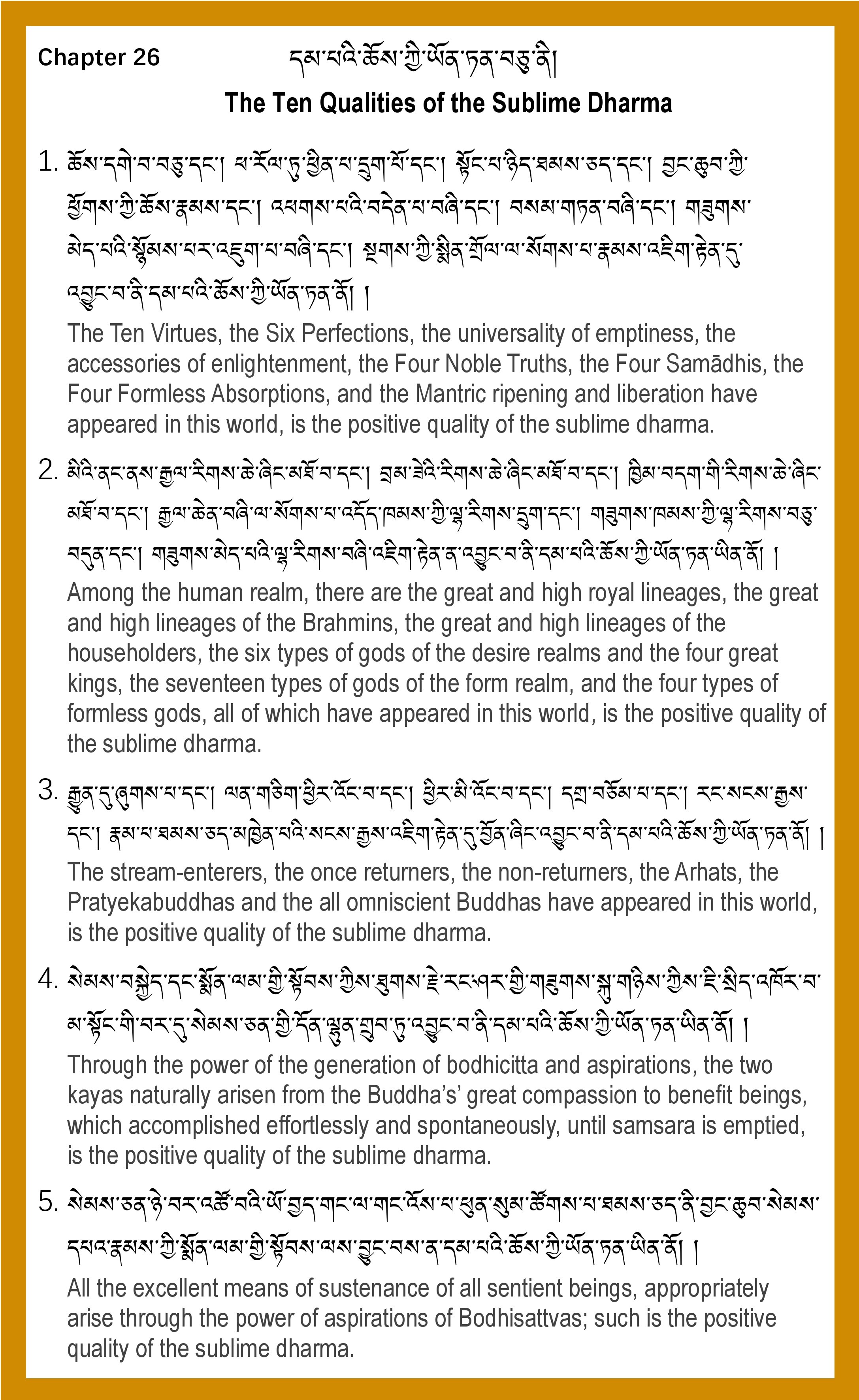
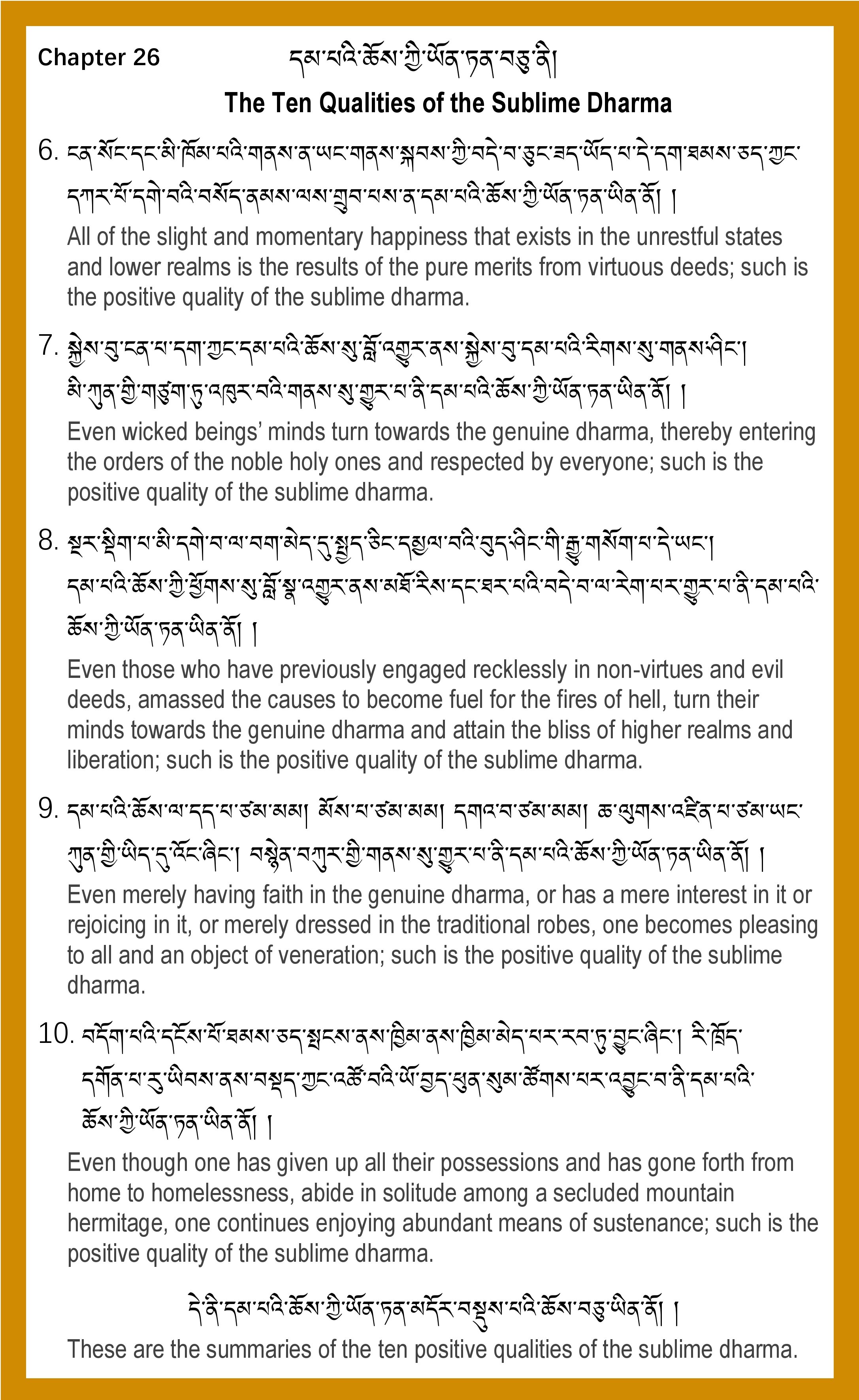

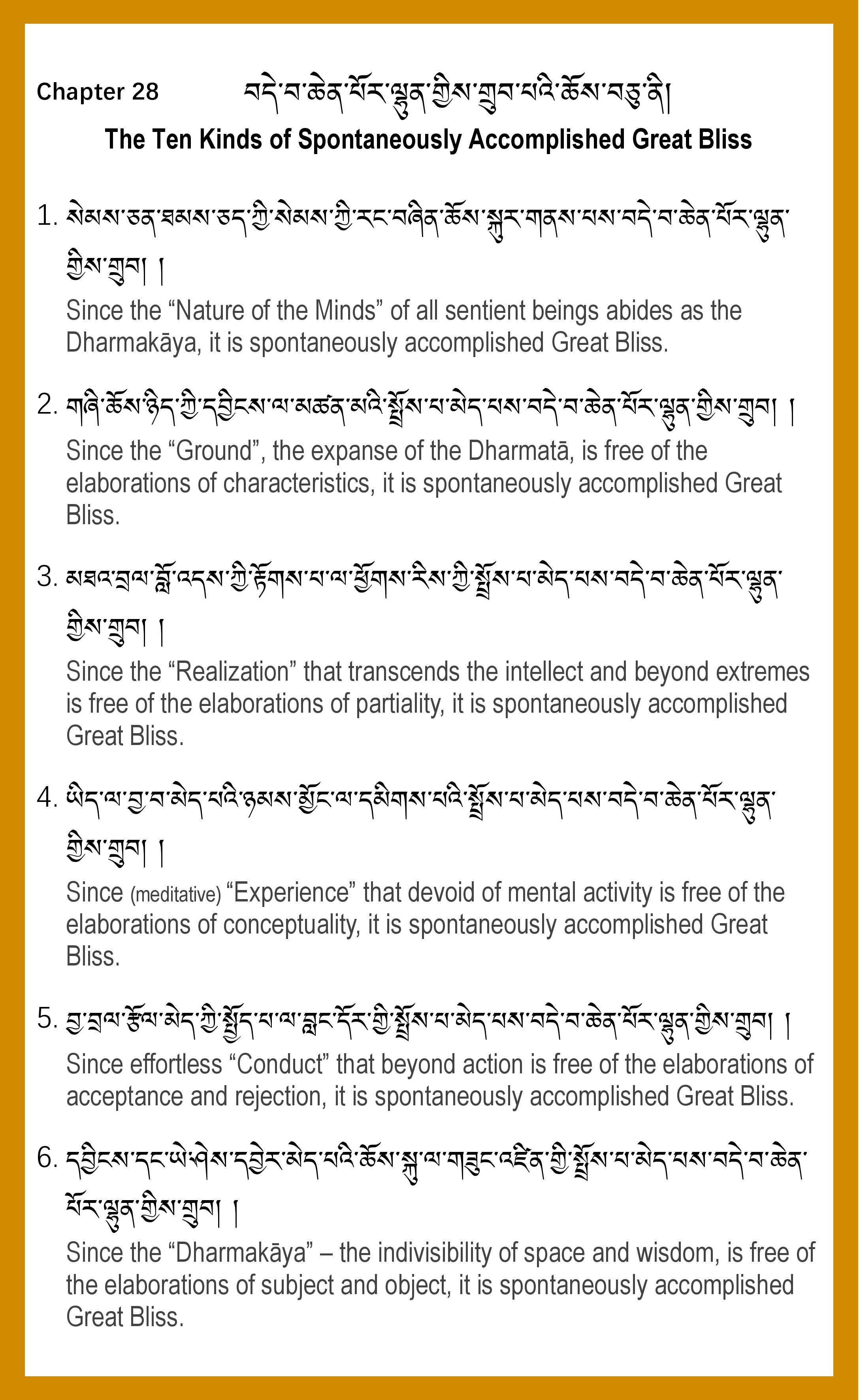
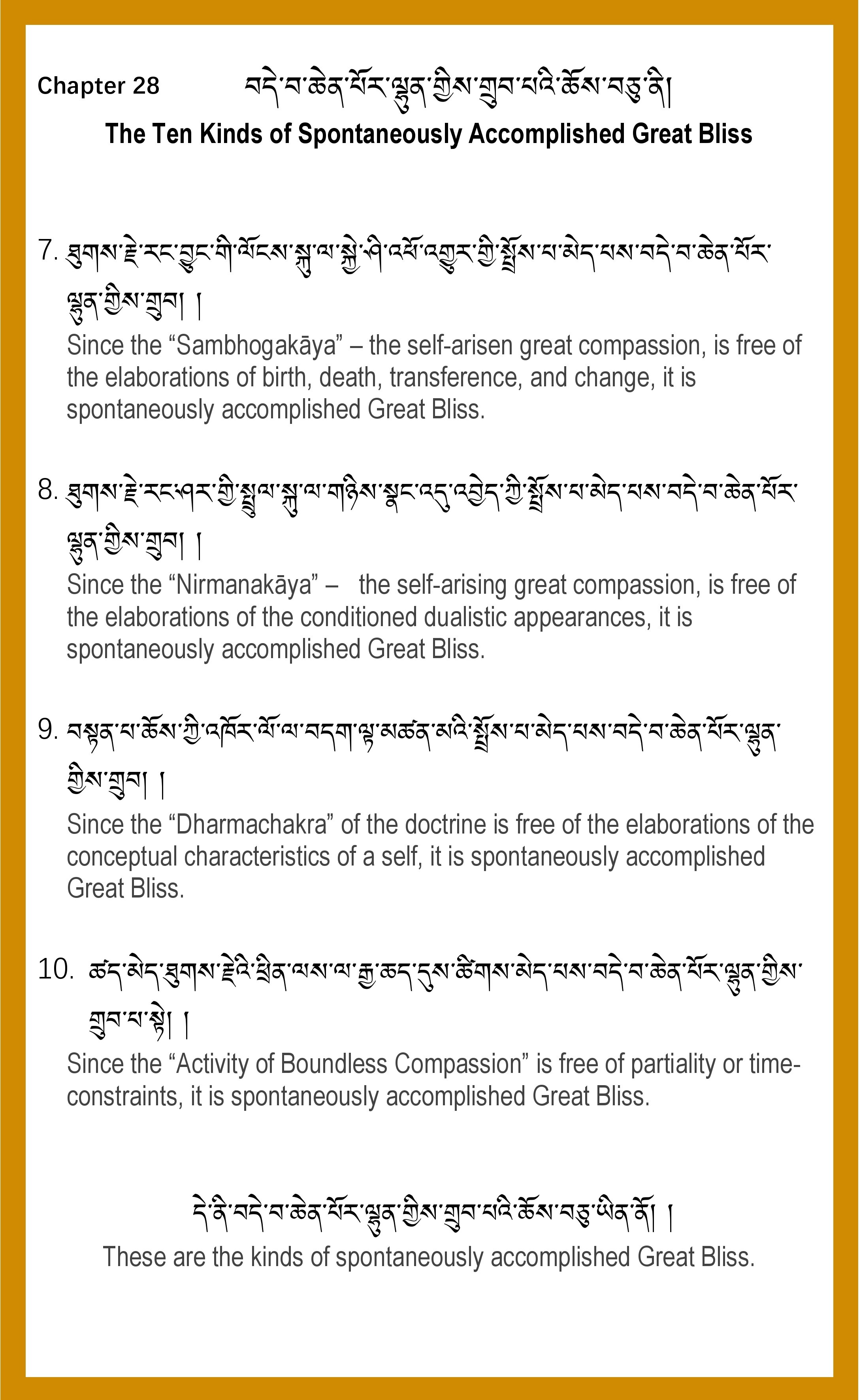
Introduction to the 28 Chapters of Gampopa’s Instructions:
The First Chapter - “The Ten Causes of Regrettable Loss” is about the rarity and preciousness of the human life, and how it can be easily slipped into the trap of wastefulness, leaving us to mourn over these irreversible losses with great regret when we get closer to the end of our lives.
The Second Chapter touched on “The Ten Necessary Things” that we must act upon in order to practice the sublime Dharma.
The Third Chapter explained the “The Ten Reliance" that we must rely upon in order to generate and increase the qualities related to Dharma practices and prevents the arisen of any foreseeable defects.
The Fourth Chapter expounded “The Ten Things to be Giving Up” to ensure our spiritual paths are aligned along the right direction, and we progress positively.
The Fifth Chapter elucidated “The Ten Things Not to be Abandoned.” For practitioners, as we progress along the path, confusions and doubts will arise at certain stages. This particular chapter clarifies the ten things that deem negative or unnecessary in the ordinary’s perception, are, in fact, invaluable support to deepen our realization and experience. Thus, it should not be forsaken.
The Sixth Chapter touched on “The Ten Things to be Known” - the ten things that we must know and comprehend at heart. Initially, understanding is achieved through logical reasoning and conceptual recognition. Eventually, as our meditation practices progress, we will be to realize its definitive meaning.
The Seventh Chapter explained “The Ten Dharmas to be Practiced” - the ten things that we, as Dharma practitioners, must strive to put into practice.
The Eighth Chapter expounded “The Ten Things to Exert Oneself” - the ten things that we must strive to exert ourselves in when facing the different challenges at various stages and levels of practice.
The Ninth Chapter explained “The Ten Self-Exhortations” that we must constantly bring to mind as encouragement for us to persevere in the path to enlightenment.
The Tenth Chapter – “The Ten Deviations" described the ten conditions where Dharma practitioners may be led astray into the wrong path or deviated from their original intention of attaining liberation to bring true benefit for self and others.
The Eleventh Chapter – “The Ten Dissimilar Things Often Mistake One for Another," highlights the ten things that may be resemblance in appearance, but are entirely different in their nature and quality, and therefore, easily be confused one for another. As Dharma practitioners, we must be vigilant in identifying such confusions.
The Twelfth Chapter – “The Ten Unmistaken Things” highlight the ten things or characteristics that are authentic and recognized qualities that every practitioner should strive to develop.
The Thirteenth Chapter – “The Fourteen Useless Things” points out the fourteen things or deeds that will render a practitioner’s life in vain and utterly fruitless spiritual journey.
The Fourteenth Chapter – “The Eighteen Hidden Flaws of Dharma Practitioners” highlights the eighteen conducts or characteristics that are discord with the pure Dharma. Every Dharma practitioner should take these to heart and constantly look inward to examine oneself.
The Fifteenth Chapter – “The Twelve Indispensable Things” summarize the twelve Dharmas or things that are necessary for us to practice the sublime Dharma. It begins with the unwavering faith derived from the immense fear of the samsaric birth and death, then meeting a holy guru, the capability to comprehend Dharma at heart, the diligence in learning and practice, the required View, Meditation and Conduct, and unerring effort to put instructions into practice until the very last moment of this life. When death approaches, we are at ease and adorned with great confidence, and spontaneously accomplish the Three Kayas that are inherently present.
The Sixteenth Chapter – “The Eleven Marks of A Sublime Being” listed out the eleven qualities of a genuine holy being, whose thoughts, words and conducts are in congruence with and in accordance to the pure Dharma. Those are the qualities of a sublime Guru.
The Seventeenth Chapter – “The Ten Things that are of No Benefit” laid down the ten things that commonly being labeled as “success” in the mundane perspective, where lots of people striving to achieve in life. However, the truth is these things do not bring about lasting or ultimate benefit, and they are totally useless to us at the time of death.
The Eighteenth Chapter – “The Ten Kinds of Self-Inflicted Suffering” states the ten ways where one is inflicting pain upon oneself. It would serve as a good self-checklist to stay away from such self-accomplished disaster.
The Nineteenth Chapter – “The Ten Things that are of Great Kindness to Oneself” detailed the ten ways of life or endeavors that are of immense benefit to oneself. Living one’s life in accordance to that will bring about the ultimate accomplishment and eternal happiness.
The Twentieth Chapter – “The Ten Correct Dharma Practices," explained the three sets of “View, Meditation and Conduct” practices which are appropriate for practitioners of different levels or inclinations. It can be also viewed as the practice stages or sequential practice as one progresses from beginner to intermediate and to advanced practitioners.
The Twenty-first Chapter – “The Ten Missteps of Dharma Practitioners," listed out the ten extremely erroneous pursuits that steered practitioners to slip into the completely wrong directions and ruined their path to enlightenment.
The Twenty-second Chapter – “The Ten Needful Things," explained the sequential practices of The Threefold Trainings and their respective goals. The first three points are on Sīla (Moral Conduct); the second three points are on Samadhi (Meditation), and third three points are on Prajna (Wisdom) practices.
The last point describes through accomplishing the Threefold Trainings; one realizes “emptiness” – the ultimate nature of all things. Confidence and certainty arise in one’s mind, and one gained the resoluteness of reality, free of doubts, confusions and fears.
The Twenty-third Chapter – “The Ten Unnecessary Things," explained that once you have realized the true nature of mind, the real ultimate realization – the Mahamudra or Dzogpa Chenpo state of mind – and gained certainty in the realized mind, then all the tools, methods or practices that help you to get there are no longer needed.
All paths of practices and trainings are akin to stairs that lead us to realize emptiness. Once you understand emptiness, you no longer need to rely upon the steps of the stair as you have already reached the top. All the 10 qualities will naturally arise within our minds when we truly understand the meaning of Mahamudra.
The Twenty-forth Chapter – “The Ten Superior Things” outlined the ten qualities that are especially exalted. A precious human life endowed with the eight freedoms and ten advantages. Having met the sublime Guru and entered the gate of Dharma with deep faith, and committed to actual practices, subsequently progress on the path and attain all the supreme qualities of human existence.
The Twenty-fifth Chapter – “The Ten Things that are Excellent No Matter How They Happen to Be” outlined the ten pairs of qualities in which whatever one achieved is excellent. However, this is purely applicable to those who have obtained certain qualifications such as genuine understanding, genuine compassion, genuine attainment of realization, etc. Only when these cause and condition are met, then either way of achievement is good. This is because once we have attained confidence and stability in our mind and practice, we will not get distracted or lost along the path. With that, we are said to possess the prerequisites that whatever we achieve in our practice, is always excellent.
The Twenty-sixth Chapter – “The Ten Qualities of the Sublime Dharma” outlined the ten positive qualities that existed in the world are attributed to the power of blessings of genuine Dharma.
The Twenty-seventh Chapter – “The Ten Things that are Merely Names” explained the ten processes or categories of practices, which are nothing but merely a terminology when we realized emptiness or the ultimate nature of all existences. This chapter explicitly touches on the ten qualities within the notion of emptiness.
As a Vajrayana practitioner, we must first understand the Two Truths – the Relative Truth and the Absolute Truth, in order to gain profound understanding of the Dharma and its practices. This chapter is explaining from the perspective of Absolute Truth.
The practices related to Relative Truth include all the processes and stages of practice: refuge, bodhicitta, prostration, deity visualization, mantra recitation, dedication, etc. All these activities involve the dualistic or conceptual mind: the notion of the deity and I, the mandala, the mantra, and so on. However, whereas in the Absolute Truth, there is only one – emptiness. The ultimate refuge is emptiness. The ultimate bodhicitta is emptiness. The ultimate of recitation is also emptiness. That emptiness is to be realized.
When we are meditating and resting our minds in its true nature, this is the practice to realize the Absolute Truth. Once realized, within the emptiness, there is no more process, no more subjects and objects. Therefore, the terms of the practices become nothing but mere names. All the practices of the Relative Truth, such as The Six Paramitas, The Four Immeasurable, etc., are naturally accomplished within the emptiness. It ripened all the qualities of the practices and give rise to boundless capacity and ability to benefit beings.
Emptiness is not mere empty or nothingness. Within emptiness, there is something called ‘wisdom’ which has its own functionality, but it is beyond dualistic and conceptuality. It is known as Great Bliss and shall be explained in the next and last chapter.
The Twenty-eight Chapter
This teaching is now coming to the end part, talking about “Fruition”, which is the Union of Emptiness and Bliss. Here, the final 28th Chapter “The Ten Kinds of Spontaneously Accomplished Great Bliss” – describing the Fruition from different angles. Emptiness and Bliss is the indivisible Union. The essence is emptiness, and within the emptiness, this chapter explains how the ten qualities are spontaneously accomplished as Great Bliss.
The above texts are compiled from the weekly Gampopa teachings conferred by Jetsun Choekyi Gonpo. We have distilled the essence of these teachings for the benefit of readers. May it benefit all!
Any errors or inaccuracies in the texts are the sole responsibility of the transcriber, translator, editor, and web administrators. They do not reflect Rinpoche's teachings, which are always flawless and insightful.
Stay tuned for more teaching compilations, which will be uploaded soon!
